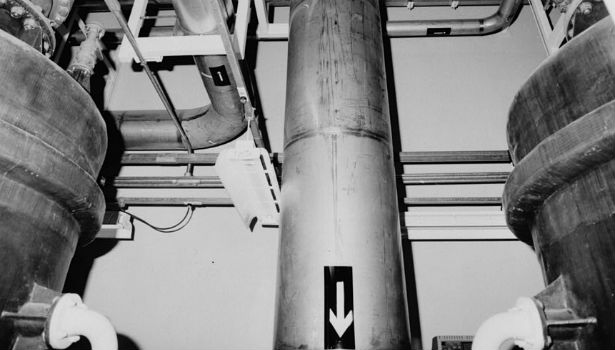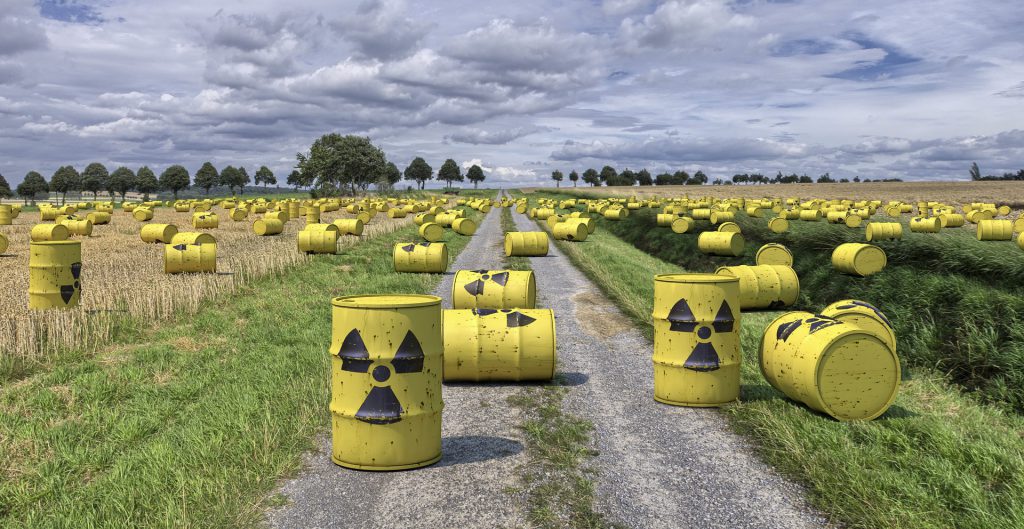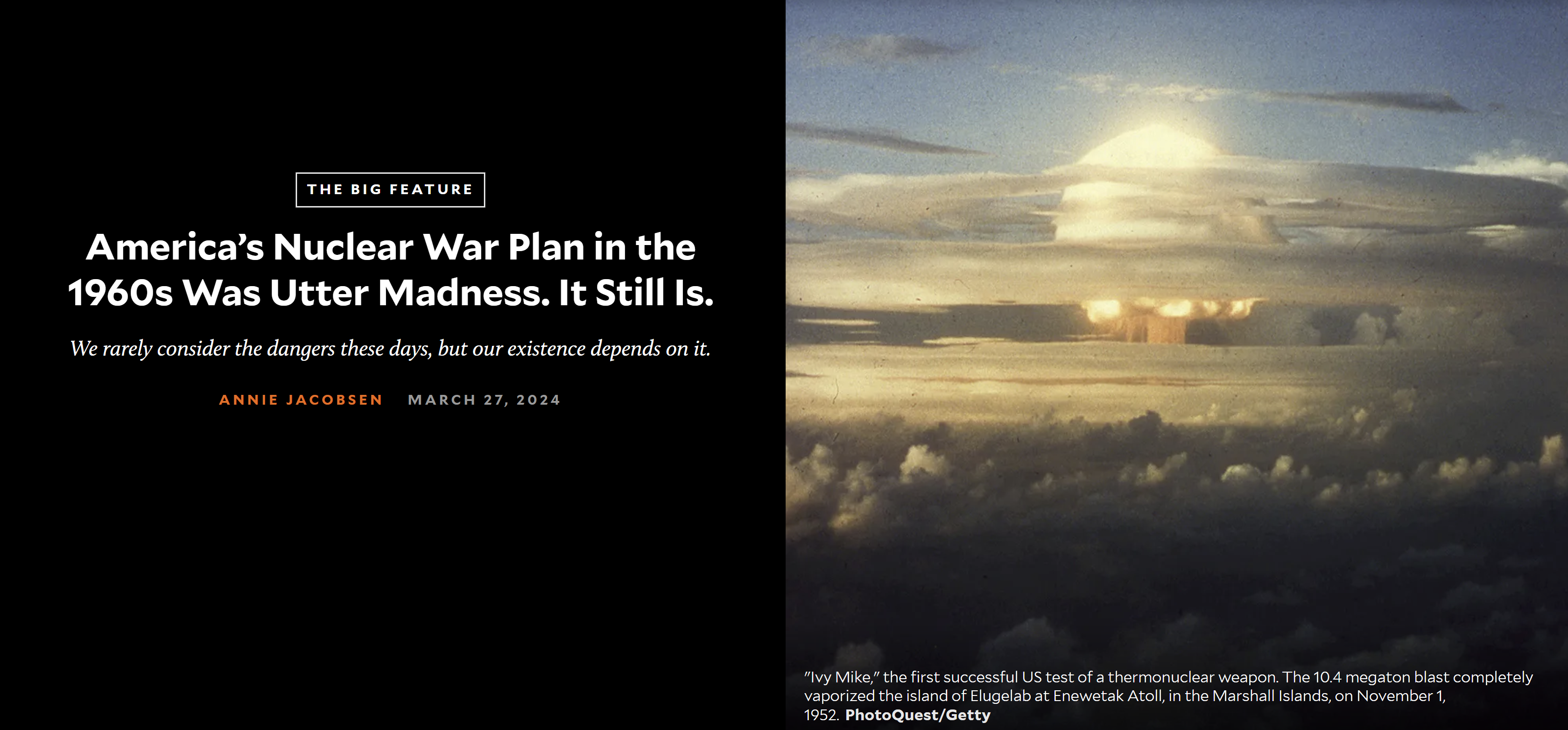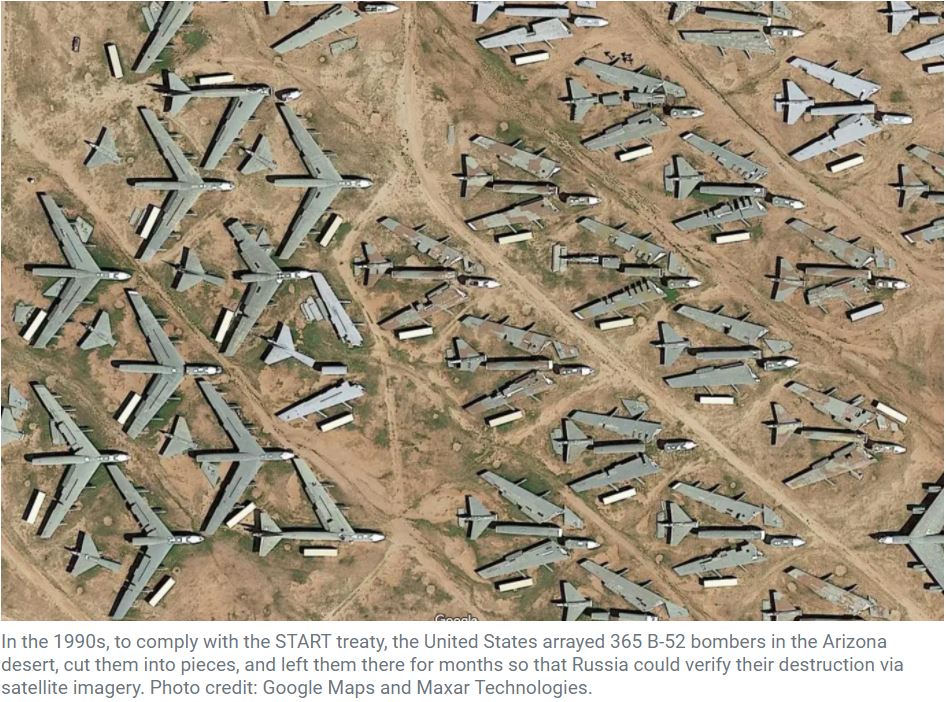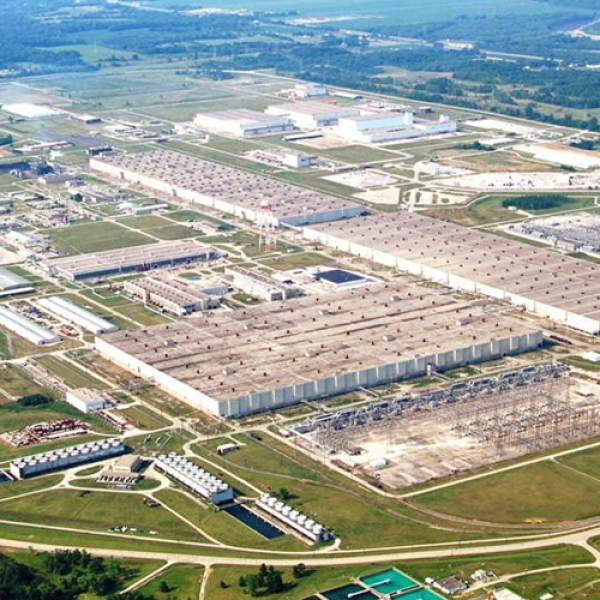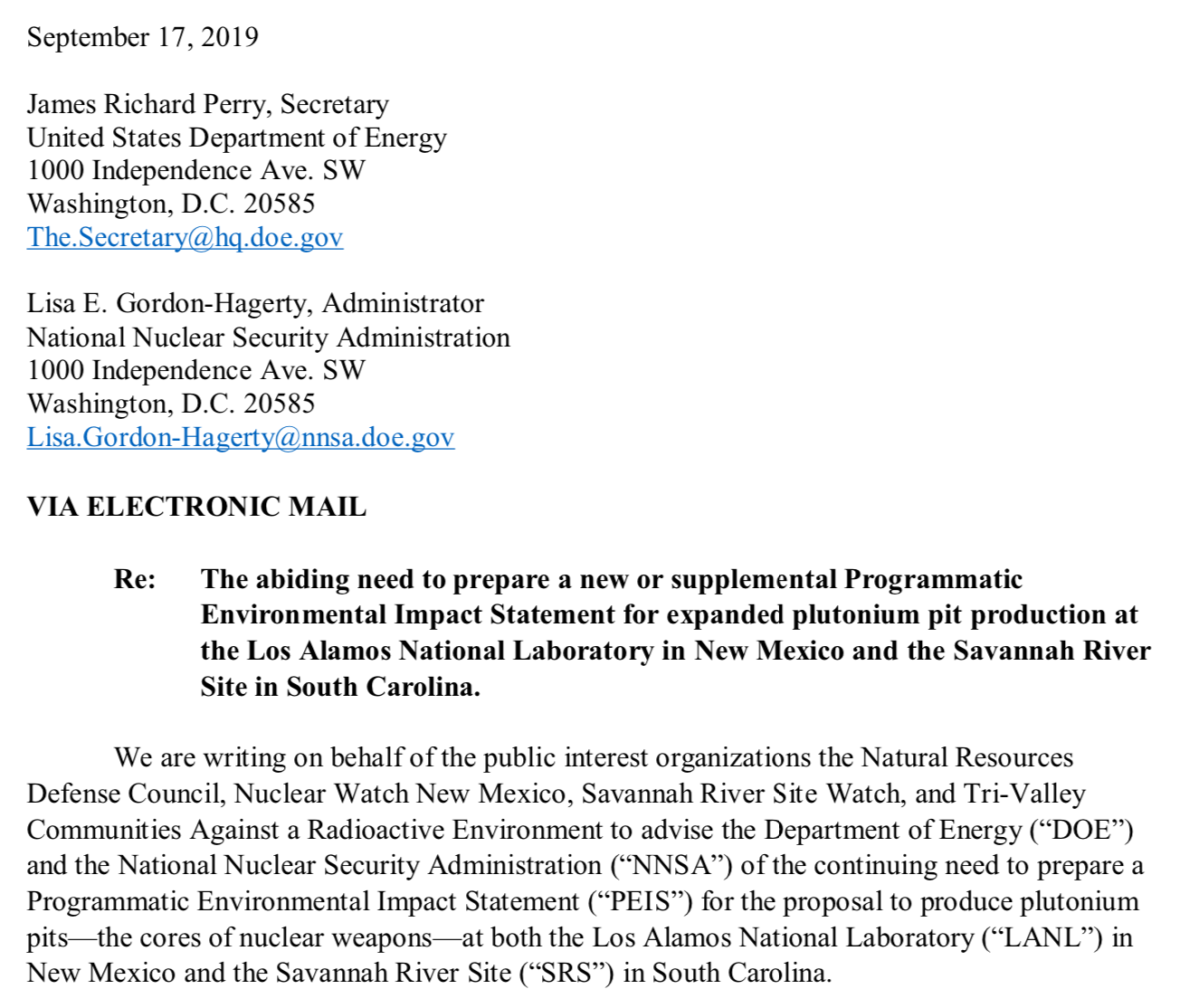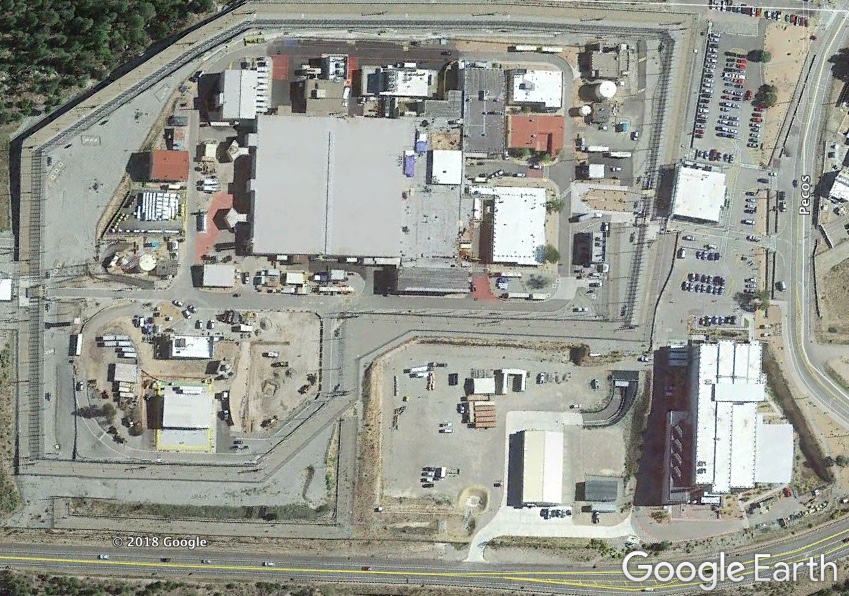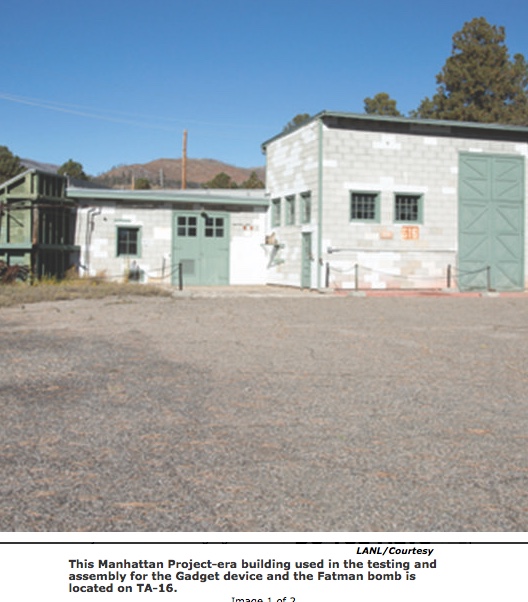Nuclear News Archives – 2020
India Successfully Tests Nuclear-Capable Shaurya Missile
“’This kind of demonstration of capability/power is extremely important to give a loud message to another nuclear-powered country that they should not take us for granted. This will bring in inherent dissuasion that will further discourage our adversaries from using nuclear weapons (against us),’ said former Northern Army commander Lieutenant General BS Jaswal (retd).”
By: Debabrata Mohanty, Rahul Singh | Edited by Sparshita Saxena Bhubaneshwar/New Delhi | hindustantimes.com
India on Saturday successfully test-fired a new version of the nuclear-capable hypersonic Shaurya missile with a range of 750 kilometres from a defence facility off the Odisha coast on Saturday, officials said. The launch is the latest in a string of recent weapons tests amid military tensions with China in the Ladakh sector.
The launch came three days after India test-fired an extended-range BrahMos surface-to-surface supersonic cruise missile from the Integrated Test Range at Balasore in Odisha. The cruise missile can hit targets 400 kilometres away – its range increased from the existing 290 kilometres.
Oak Ridge Environmental Peace Alliance: Response to NNSA issuing Amended Record of Decision on EU operations at Y-12 Plant
GOVERNMENT ISSUES RECORD OF DECISION TO CONTINUE NUCLEAR WEAPONS PRODUCTION AT Y-12 COMPLEX IN OAK RIDGE, DOWNPLAYING RISK TO WORKERS AND PUBLIC CITIZENS SAY, “A BEGINNER’S CLASS IN DISSEMBLING”
The National Nuclear Security Administration issued an Amended Record of Decision for the Continued Operation of the Y-12 National Security Complex* on September 30, 2020. NNSA says the new decision updates its October 2019 AROD.
The AROD dismisses risks from earthquakes and declares that NNSA will continue to conduct nuclear weapons manufacturing operations in facilities that do meet environmental and safety codes for at least 20 more years under its Enriched Uranium program. This AROD is the result of a federal court decision in September 2019 in a case brought by the Oak Ridge Environmental Peace Alliance, Nuclear Watch New Mexico, the Natural Resources Defense Council and four individual plaintiffs. In that decision, Chief Judge Pamela Reeves ruled NNSA had not met the requirements of the National Environmental Policy Act. Judge Reeves vacated two Supplement Analyses and one previous AROD and ordered NNSA to conduct further analysis on the risks of earthquakes.
“The new Amended Record of Decision is a pretty respectable beginner’s class in dissembling,” said OREPA coordinator Ralph Hutchison. “The first lie is a big one, and easily disproved. NNSA says ‘The court further held that NNSA is not required to prepare a Supplemental Environmental Impact Statement for the UPF Project or the Extended Life Program.’ This is simply not true.
“The court explicitly did not make that finding; it would have been inappropriate. What the court did was tell NNSA they didn’t have to prepare a new or Supplemental EIS due to changed circumstances. Instead, they had to prepare a Supplement Analysis—one step earlier in the process—to determine whether or not a new or Supplemental EIS was required. That is the only purpose of an SA, and NNSA knows it. They just tried to spin it. Either that, or they think the court didn’t understand what it was saying.
SC Judge Freezes Federal Funds From $600 Million Plutonium Settlement
“A former Democratic state legislator, Sellers said that from his experience, he knows if the $600 million — or however much money there is — goes into the general fund, the money will not be spent on the counties impacted by the storage of plutonium.”
BY: JOHN MONK | thestate.com
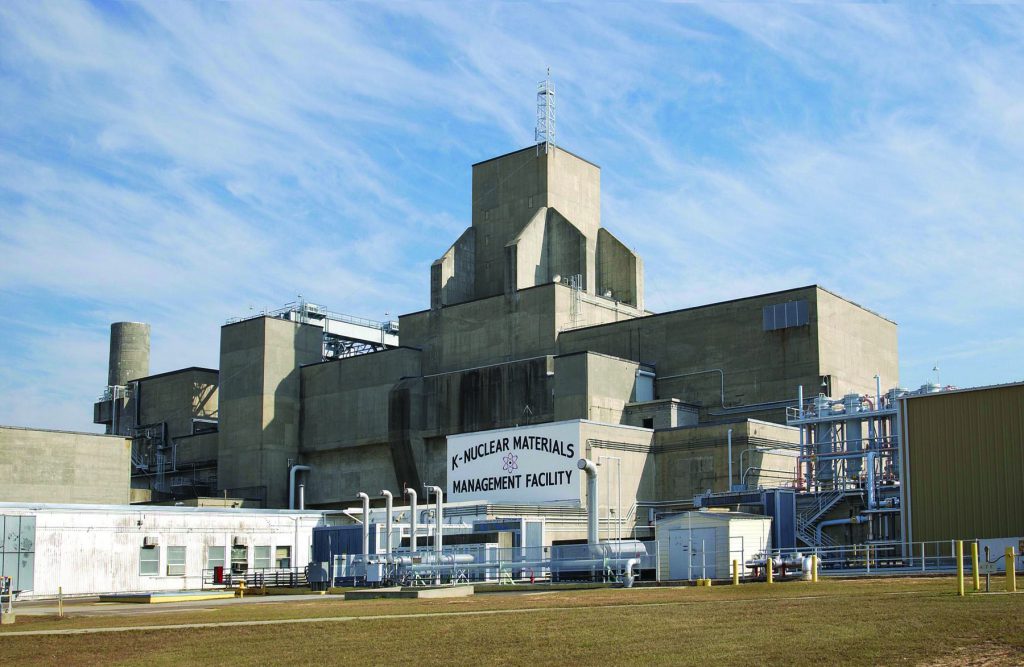
Credit SAVANNAH RIVER SITE / SRS.GOV
BARNWELL, SC – A state circuit judge on Wednesday issued a temporary injunction freezing $600 million in federal funds that came to South Carolina as a result of a political settlement in a long-running dispute over what to do with some 11 tons of deadly plutonium now stored at the Savannah River Site in Barnwell County.
Judge Clifton Newman issued the injunction against State Attorney General Alan Wilson shortly before noon Wednesday in response to a motion by State Sen. Brad Hutto, D-Orangeburg, who represents Barnwell County, Allendale County and five other counties in the area.
Newman’s injunction, issued from the bench in a Barnwell County courtroom, is temporary and within a month he is expected to hold another hearing that will fully air differing sides on what to do with the $600 million.
“All federal funds received by the state must be appropriated by the state in accordance with the federal purpose for which it was intended,” Hutto told the judge. Since the funds in the settlement were given by the federal government as compensation for the plutonium stored in their geographic area, they should generally be spent there in those impacted counties along the state’s southwestern boundary, Hutto argued.
It is essential that the “identity” of the federal funds be preserved before Wilson routes the money into the state’s general fund, where other lawmakers might seek to spend it for purposes outside those South Carolina counties Hutto represents, Hutto told the judge.
Compact Nuclear Fusion Reactor Is ‘Very Likely to Work,’ Studies Suggest
“…the hurdles to building a machine that can create and control a fusion plasma — a roiling ultrahot cloud of atoms that will damage or destroy anything it touches — are enormous.”
BY: HENRY FOUNTAIN | nytimes.com
Scientists developing a compact version of a nuclear fusion reactor have shown in a series of research papers that it should work, renewing hopes that the long-elusive goal of mimicking the way the sun produces energy might be achieved and eventually contribute to the fight against climate change.
Construction of a reactor, called Sparc, which is being developed by researchers at the Massachusetts Institute of Technology and a spinoff company, Commonwealth Fusion Systems, is expected to begin next spring and take three or four years, the researchers and company officials said.
Although many significant challenges remain, the company said construction would be followed by testing and, if successful, building of a power plant that could use fusion energy to generate electricity, beginning in the next decade.
DOE Activities Raise Safety Concerns about Plutonium at Three Facilities
“The DOE proposal to dispose of the useless MOX fuel pellets is unprecedented, but has been subjected to only a brief mention in an environmental analysis on pit production. Tom Clements, director of SRS Watch, says, “The analysis conducted on the disposal of the plutonium fuel is totally inadequate and a full Environmental Impact Statement (EIS) must be conducted before any repackaging and shipment to WIPP. ”
September 30, 2020 | nuclearactive.org
According to the Department of Energy (DOE), plans are under way to remove unused plutonium fuel from the Los Alamos National Laboratory (LANL). The uranium-plutonium fuel, containing around 26.4 kilograms (58.2 pounds) of weapon-grade plutonium, is called “mixed-oxide,” or MOX. In a late-August document, DOE stated that the MOX fuel, produced in France for a program at the Savannah River Site (SRS), would be disposed of as transuranic waste and therefore go to the Waste Isolation Pilot Plant (WIPP).
At present the MOX fuel, in the form of pellets, is stored at LANL’s PF-4 plutonium facility. DOE needs to empty PF-4 to have space for its planned annual production of up to eighty plutonium “pits”, or triggers, for nuclear weapons.
Four powerful players want a nuclear waste solution. What’s stopping them?
“The nuclear industry’s position in support of spent fuel legislation is tempered by a combination of reality and priorities. While the industry regularly testifies in favor of finding a long-term solution to the spent fuel problem, the reality is that state legislative prohibitions on the construction of new nuclear reactors are meaningless, given that no new reactors are planned in the foreseeable future. It is uneconomic and/or not politically viable to build a new reactor in the United States—even one of the small modular reactors under development.”
BY: JDAVID KLAUS | thebulletin.org
The 92-page platform adopted at the Democratic National Convention does not include a single sentence on the issue of how to manage the more than 80,000 tons of spent nuclear fuel sitting at 70 sites in communities across the country. The Republicans adjourned without adopting any new platform for 2020, leaving their 2016 platform in place—but it also did not address the nuclear waste issue.
Ironically, political interest in addressing the spent fuel issue is decreasing at a time when the number of closed nuclear plants in the United States is increasing—and it is common practice to level the plant and leave the spent fuel behind. If the issue had been as significant a political priority today as it was in the past, it would have been included in one or both of the platforms.
In its 2004 and 2008 platforms, the Democratic Party committed to “protect Nevada and its communities from the high-level nuclear waste dump at Yucca Mountain, which has not been proven to be safe by sound science.” Republicans, in their 2012 platform, focused on how “[t]he federal government’s failure to address the storage and disposal of spent nuclear fuel has left huge bills for States and taxpayers.”
Trump Administration Orders Assessment on Bolstering Nuclear Warheads as Talks With Russia Stall
“U.S. diplomats are trying to play hardball with Russia in negotiations over whether to extend New START.
“It’s very stupid,” added a former GOP arms control official who declined to be identified because he still advises the government. “It makes absolutely no sense to threaten to upload. It becomes a valid leveraging point only if the other side can’t do it. The Russians can do it, too.” ”
BY: DANIEL LIPPMAN, BRYAN BENDER & LARA SELIGMAN | politico.com
The Trump administration has asked the military to assess how quickly it could pull nuclear weapons out of storage and load them onto bombers and submarines if an arms control treaty with Russia is allowed to expire in February, according to three people familiar with the discussions.
The request to U.S. Strategic Command in Nebraska is part of a strategy to pressure Moscow into renegotiating the New Strategic Arms Reduction Treaty before the U.S. presidential election, the people said.
In making the request, the Trump administration wants to underscore that it is serious about letting the treaty lapse if Russia fails to meet U.S. demands. The negotiating team is leery that Russia is dragging out the talks in the hope that Joe Biden — who has pledged to extend New START under what Moscow believes will be more favorable terms than what this White House is offering — wins the election.
“It’s a clear signal that the costs for not negotiating before the election are going to go up,” said one of the people, who requested anonymity to relay sensitive discussions. The Trump administration is “trying to create an incentive, and it’s a real incentive, for the Russians to sit down and actually negotiate.”
The request for the assessment came in the last two weeks from a group of officials at the National Security Council and State, Defense and Energy departments that’s supporting Ambassador Marshall Billingslea in negotiations with Moscow to try to replace New START before it runs out in February.
Continue reading
U.S. Department of Energy Confirms 11.5 Metric Tons of Plutonium Stored at Savannah River Site; SRS Watch Supports DOE Assertion that Plutonium Storage “Not Posing any Additional Risk to Communities Surrounding the SRS”
https://srswatch.org/wp-content/uploads/2020/09/SRSW-news-on-SRS-plutonium-inventory-Sep-29-2020.pdf
Kaysville Withdraws From Nuclear Power Project
“We just don’t want to take on the risk of being in the project at this point.” – Councilman Andre Lortz
By: NATHAN BROWN | postregister.com
One more Utah city has withdrawn from a project to build 12 small nuclear reactors west of Idaho Falls.
The Kaysville City Council voted unanimously a week-and-a-half ago to withdraw from the Carbon Free Power Project, although the resolution left the door open for the city to hold a special meeting to rejoin the project if anything changes.
“Kaysville City is still interested in being involved with the UAMPS project,” Mayor Katie Witt said in an email. “However, we did withdraw on Sept. 17 for the time being. We would like to participate if our concerns are mitigated.”
Councilman Andre Lortz said he believes in the project, calling it “an innovative project that’s going to be very important in the future” that could fill gaps wind and solar power can’t.
“We’d love to be in this project,” he said. “We just don’t want to take on the risk of being in the project at this point.”
Lehi and Logan have also withdrawn from the Carbon Free Power Project over the past month-and-a-half, citing potential risks to local taxpayers if costs go up. There are still more than 30 cities and power systems, including Idaho Falls, that are part of it, and the members have until Oct. 31 to recommit to the project’s next phase by approving the new budget. Utah Associated Municipal Power Systems is waiting for the U.S. Department of Energy to give final approval to a promised $1.4 billion to support the project.
Portland-based NuScale Power is designing the small modular reactors, which will produce 720 megawatts and which UAMPS plans to build at the DOE desert site west of Idaho Falls. The plant is expected to be operational in 2029.
WORLD NUCLEAR INDUSTRY LOSES GROUND TO CHEAP RENEWABLES AS CANADA CONSIDERS SMALL MODULAR REACTORS
“The world nuclear industry “continues to be in stasis,” with power plants shutting down at a faster rate in western Europe and the United States, the number of operating reactor units at a 30-year low, and the few new construction projects running into “catastrophic cost overruns and schedule slippages,” according to the latest edition of the annual World Nuclear Industry Status Report (WNISR), released last week.”
By: MITCHELL BEER / theenergymix.com

“Some 408 nuclear reactors were in operation in 31 countries as of July 2020, a decline of nine units from mid-2019 and 30 fewer than the 2002 peak of 438,” Reuters writes, citing the report. “The slow pace of new projects coming onstream also increased the overall age of the global fleet to around 31 years.”
“Overall, in terms of the cost of power, new nuclear is clearly losing to wind and photovoltaics,” with the two renewable technologies now receiving about 10 times the investment, write Jungmin Kang, former chair of South Korea’s Nuclear Safety and Security Commission, South Korea, and Princeton University Professor Emeritus Frank von Hippel, in their foreword to the 361-page report. That meant new nuclear projects “were struggling to secure finance amid competition from renewables, with reported investment decisions for the construction of new nuclear plants at around US$31 billion in 2019,” Reuters says.
Biden would push for less US reliance on nukes for defense
“If future budgets reverse the choices we’ve made, and pour additional money into a nuclear buildup, it hearkens back to the Cold War and will do nothing to increase the day-to-day security of the United States or our allies,” Biden said in a Jan. 11, 2017, speech at the Carnegie Endowment for International Peace.
By: ROBERT BURNS | apnews.com
The State of New Mexico Objects to Nuclear Fuel Storage Plan
“New Mexico is strongly objecting to federal nuclear regulators’ preliminary recommendation that a license be granted to build a multibillion-dollar storage facility for spent nuclear fuel from commercial power plants around the U.S.”
BY: SUSAN MONTOYA BRYAN / ASSOCIATED PRESS abqjournal.com
State officials, in a letter submitted Tuesday to the Nuclear Regulatory Commission, said that the site is geologically unsuitable and that technical analysis has been inadequate. They also say regulators have failed to consider environmental justice concerns and have therefore fallen short of requirements spelled out by federal environmental laws.
The letter also reiterates the state’s concerns that the storage facility would become a permanent dumping ground for the spent fuel, as the federal government has no permanent plan for dealing with the waste that has been piling up at nuclear power plants.
The officials pointed to a legacy of contamination in New Mexico that includes uranium mining and milling and decades of nuclear research and bomb-making at national laboratories, saying minority and low-income populations already have suffered disproportionate health and environmental effects as a result.
Given the concerns, state officials wrote that a draft environmental review of the project “fails to demonstrate that residents of New Mexico, including vulnerable populations, will be adequately protected from exposure to the radioactive and toxic contaminants that could be released to air and water by the proposed action.”
A group of Democratic state lawmakers also raised concerns.
Elected leaders in southeastern New Mexico support the project, saying it would bring jobs and revenue to the region and provide a temporary option for dealing with the spent fuel.
The WNISR2020 Assesses Challenges Nuclear Power is Facing in the Age of COVID‑19
“New renewable resources like wind and solar power increased by 184 gigawatts last year, while nuclear power grew by only 2.4 gigawatts. As a result — for the first time in history — renewable sources (excluding hydropower) generated more power than nuclear plants in 2019.”
“Nuclear energy has become irrelevant in the electricity generating technology market,” said Mycle Schneider, the coordinator of the report. “At the same time, COVID-19 puts additional stress on the sector.”
September 24, 2020 | worldnuclearreport.com
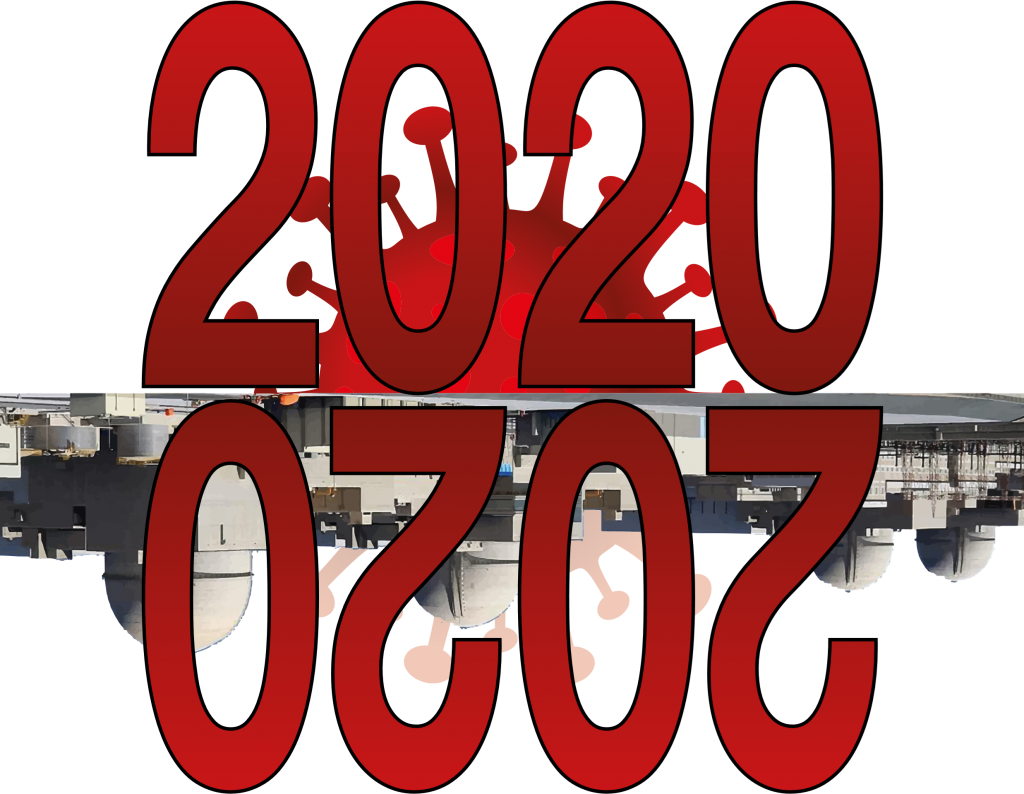 The World Nuclear Industry Status Report (WNISR2020), released on 24 September 2020, assesses in 361 pages the status and trends of the international nuclear industry and analyzes the additional challenges nuclear power is facing in the age of COVID-19. For the first time we report includes as specific chapter analyzing nuclear programs in the Middle East as the first reactor started up in the Arab world.
The World Nuclear Industry Status Report (WNISR2020), released on 24 September 2020, assesses in 361 pages the status and trends of the international nuclear industry and analyzes the additional challenges nuclear power is facing in the age of COVID-19. For the first time we report includes as specific chapter analyzing nuclear programs in the Middle East as the first reactor started up in the Arab world.
Seven interdisciplinary experts from Canada, France, Germany, Japan, Lebanon/U.S. and the U.K., from top think tanks like Chatham House in London and prestigious universities like Harvard in Cambridge, Meiji in Tokyo and Technical University in Berlin, have contributed to the report, along with a data engineer, numerous proofreaders and two artistic designers. The foreword was provided by Frank von Hippel, Professor Emeritus of Princeton University, and Jungmin Kang, former head of the safety authority in South Korea.
The number of operating reactors in the world has dropped by nine over the past year to 408 as of mid-2020, that is below the level already reached in 1988, and 30 units below the historic peak of 438 in 2002.
Ohio EPA: Plan for A-plant landfill to be issued
Piketon’s Chandler rips Ohio delegation; Pike Commissioner vows legal action
BY: RICK GREENE | southernohiotoday.com

Piketon Councilwoman Jennifer Chandler criticized Ohio Sens. Sherrod Brown and Rob Portman, along with U.S. Rep. Brad Wenstrup, for what she calls a lack of engagement on the controversial issue of an On-Site Waste Disposal Facility at the Portsmouth Gaseous Diffusion Plant near Piketon. “Now they can have the largest nuclear waste dump east of the Mississippi River,” Chandler said.
In a virtual meeting Tuesday, the Ohio EPA announced it plans to issue the Waste Acceptance Criteria Implementation Plan, which outlines the disposition process for materials allowed to be placed into the controversial On-Site Waste Disposal Facility at the Portsmouth Gaseous Diffusion Plant near Piketon.
The announcement comes despite calls from officials with the Village of Piketon and the Pike County Board of Commissioners for more engagement from the public on the contaminants that will be permitted inside the radiological landfill.
During the meeting, the Ohio EPA explained the Waste Acceptance Criteria had been established in 2015 during the process that led to the Waste Disposition Record of Decision. Ohio EPA says the Implementation Plan deals primarily with the execution of the disposition of wastes previously determined by the 2015 Waste Acceptance Criteria.
Piketon Councilwoman Jennifer Chandler, a longtime critic of the U.S. Department of Energy and the landfill, asked multiple questions during the virtual forum. Afterwards, she said she remains frustrated by DOE, the Ohio EPA and Ohio’s federal delegation by what she calls a complete disregard for the people of Southern Ohio.
“I’m getting angrier and angrier as Ohio EPA continues to dodge questions and continues to suggest there was public involvement in this process,” Chandler said. “I do appreciate the forum and appreciate it was tough for some (Ohio EPA representatives) to say what they had to say. But it was very clear to all of us who is really in charge of this project, and that’s DOE and it’s going to have its way in Southern Ohio because Ohio EPA can’t do anything about it.”
Why Does Missile Defense Still Enjoy Bipartisan Support in Congress?
“…Ending the defense contractor honey pot. Reagan’s Strategic Defense Initiative was a turning point because it provided substantial funding for missile defense research and design. It was as though the defense contractors who were engaged in this research had suddenly found gold in a Wild West landscape. The initiative became an uncontrollable and unaccountable program with lax oversight, resulting in wasted taxpayer money and virtually no advancement in missile defense technologies.”
BY: SUBRATA GHOSHROY | thebulletin.org
The program to develop a missile defense system to protect the United States mainland has existed in one form or another for nearly six decades. Though it was controversial from the beginning and faced nearly unsurmountable technical challenges, it has enjoyed bipartisan support and continued funding in Congress for more than 20 years.
In July, both the House of Representatives and the Senate passed their own versions of a defense authorization bill for 2021. By a wide majority, both chambers authorized more than $740 billion for defense spending next year. Tucked away in the Senate bill was $20.3 billion for missile defense, and that funding could make it into the final version that lands on the president’s desk. While $20.3 billion may not seem significant in a $740 billion budget, it is nevertheless a startling figure. What’s more, US taxpayers have invested nearly $200 billion on missile defense in the past two decades and another $100 billion in the decade before, with little to show for it. Even under artificially easy tests conditions, the most modern missile defense system meant to protect the United States mainland has failed more times than it has succeeded often in highly scripted tests.
U.S. scrambles to do nuclear deal with Russia before election, issuing ultimatum
Frustration is mounting inside the Trump administration as Russia gives little indication of whether it will agree to an arms control deal before President Trump faces reelection, according to senior U.S. administration officials, who are trying to secure the deal.
By: Paul Sonne & John Hudson | washingtonpost.com
The administration’s scramble to cut a deal with Russia before the election comes as the president’s top diplomats have been rushing to secure diplomatic achievements as U.S. voters begin going to the polls.
‘Midnight Rockets’: Whistleblower lawsuit reveals toxic releases by Ohio nuclear plant
“According to the suit, the Portsmouth Gaseous Diffusion Plant “would regularly and purposefully vent raw UF6 [uranium hexafluoride], transuranics, heavy metals, and o’her toxic chemicals into the atmosphere.’”
BY: SEAMUS BRUNER | justthenews.com
A whistleblower lawsuit filed by former workers at an Ohio nuclear plant has revealed new details about disturbing practices during the plaintiffs’ tenures at the Portsmouth Gaseous Diffusion Plant (PORTS), including the alarming process — dubbed “midnight rockets” — of releasing toxic chemicals into the atmosphere.
According to the suit, “PORTS would regularly and purposefully vent raw UF6 [uranium hexafluoride], transuranics, heavy metals, and other toxic chemicals into the atmosphere from the roof of the process buildings.”
Filed against U.S. Department of Energy nuclear fuel contractors on Sept. 3 in the Southern District of Ohio, Eastern Division, Walburn, et al, v. Centrus Energy Corp., et al alleges criminal conduct, gross negligence, poisoning of nuclear workers, and contamination of Ohio communities in Pike, Scioto and neighboring counties with radioactive isotopes, causing cancer clusters, injuries, sickness and death, as well as loss of property values.
Bechtel & Aecom, U.S. Department of Energy (DOE) Contractors, Agree to Pay $57.75 Million to Resolve Claims of Time Charging Fraud at Doe’s Hanford Waste Treatment Plant
Major Government Contractors Admit to Overcharging between 2009 and 2019 by Billing Time Not Worked, and also Agree to Three-Year Independent Corporate Monitor
U.S ATTORNEY’S OFFICE, EASTERN DISTRICT OF WASHINGTON | justice.gov
Richland and Spokane, WA – Today, the United States Attorney’s Office for the Eastern District of Washington announced that major federal contractors Bechtel National Inc., Bechtel Corporation (Bechtel), AECOM Energy & Construction, Inc. (AECOM), and their subsidiary Waste Treatment Completion Company, LLC (WTCC), agreed to pay $57,750,000 to the U.S. Department of Justice (DOJ) to resolve claims that Bechtel and AECOM fraudulently overcharged the U.S. Department of Energy (DOE) in connection with its operation of the Hanford Waste Treatment Plant (WTP) project. The False Claims Act (FCA) claims arose from allegations that Bechtel and AECOM management were aware of and failed to prevent inflated labor hours being charged to DOE, and for falsely billing DOE for work not actually performed.
The WTP is located at DOE’s Hanford Site near Richland, Washington. Between 2001 and the present, DOE has paid billions of dollars to Bechtel and AECOM to have them design and construct the WTP, the purpose of which is to treat hundreds of millions of gallons of dangerous radioactive waste currently stored at the Hanford Site. To construct, operate, and maintain the WTP, Bechtel and AECOM employed hundreds of electricians, millwrights, pipefitters, and other skilled tradesmen known as “craft” workers.
As part of the settlement secured by the U.S. Attorney’s Office (USAO) for the Eastern District of Washington, Bechtel and AECOM admitted to a detailed Statement of Facts setting forth their actionable conduct. Between 2009 and 2019, Bechtel and AECOM admitted to overcharging DOE for unreasonable and unallowable idle time experienced by craft personnel. Bechtel and AECOM further admitted to failing to schedule and carry out adequate work to keep craft personnel sufficiently occupied and productive, resulting in excessive idle time. Bechtel and AECOM also admitted that Bechtel and AECOM management knew that craft personnel were experiencing idle time due to management’s failure to assign sufficient work, and that this idle time could, at times, last “several hours.” Finally, Bechtel and AECOM admitted that they improperly billed DOE labor costs for the unreasonable idle time and continued doing so for years, even after Bechtel and AECOM knew they were under investigation for the improper billing practices.
LANL Could Put Weapons-Grade Waste in WIPP
Tom Clements, executive director of the nonprofit Savannah River Site Watch, said the unspent fuel rods at Los Alamos contain weapons-grade plutonium. He also contended the proposed disposal method is improper and potentially dangerous. The material could get in the wrong hands or a waste barrel could burst, he said
BY: SCOTT WYLAND | santafenewmexican.com
The National Nuclear Security Administration plans to move weapons-grade plutonium from Los Alamos National Laboratory to an underground storage site in Southern New Mexico that nuclear watchdogs say is not intended to hold such high-level waste.
The plan could pose a security risk, argued the leader of one watchdog group, who believes officials should conduct more analysis before moving forward.
About 26.4 kilograms of unspent nuclear fuel rods, which have been stored at Los Alamos’ plutonium plant since 2005, must be cleared out to make room for the production of new pits, the softball-sized cores that trigger warheads, according to an August report.
Former World Leaders Urge Ratification of Nuclear Arms Ban Treaty
“In an open letter, the onetime leaders implored their own governments to embrace an arms treaty negotiated at the U.N. three years ago. It is six ratifications short of the 50 needed to go into effect.”
Nonetheless, delegates from 122 nations — practically two-thirds of the U.N. membership — participated within the negotiations for the treaty, and 84 have signed it. As of Sunday, 44 of these nations had ratified the treaty, which might come into power 90 days after the 50th ratification. At least one or two extra nations might ratify it in coming days or even weeks.
Under the treaty, all nuclear-weapons use, risk of use, testing, growth, manufacturing, possession, switch and stationing in a special nation can be prohibited. For nuclear-armed nations that be part of, the treaty outlines a course of for destroying stockpiles and imposing the promise to stay free of nuclear weapons.
These Russians aren’t going away
“Labeled “extremists” and “foreign agents”, Fedor Maryasov and Andrey Talevlin put country and courage first.”
By: Oleg Bodrov | beyondnuclearinternational.com
The first time Fedor Maryasov realized that something might be very wrong in his community was as a teenager. Growing up in the uranium mining city of Zarafshan, Uzbekistan, young Fedor and his friends would swim in artificial ponds holding discharge water from the uranium mines. They fished there too, but they began to notice the fish were disfigured by genetic abnormalities, displaying red spots and growths. Still, the authorities were saying nothing. And the teenage boys, like most people in Zarafshan, knew little about how radiation affects living organisms.
Ambassador: Time is right for new arms control agreement
“Arguing that its stockpile is small, China has said it would participate only if the U.S. agrees to nuclear parity among all nations. Russia has suggested that if China were part of the pact, other countries would need to be included as well.”
BY: The Associated Press, SUSAN MONTOYA BRYAN | apnews.com
ALBUQUERQUE, N.M. (AP) — The Trump administration has sketched out a framework that it hopes will avoid a three-way arms race as a deadline nears for extending the only remaining nuclear arms control deal with Russia and as China looks to expand its nuclear forces.
Ambassador Marshall Billingslea, the special presidential envoy for arms control, spoke with The Associated Press about negotiations with Russia while touring some of the top nuclear research labs and production sites in the United States.
Arizona’s ‘downwinders,’ exposed to Cold War nuclear testing, fight for compensation
“It’s a travesty, and the government should not be allowed to get away with it,” one Mohave County, Arizona, resident said.
BY: ANITA HASSAN | nbcnews.com
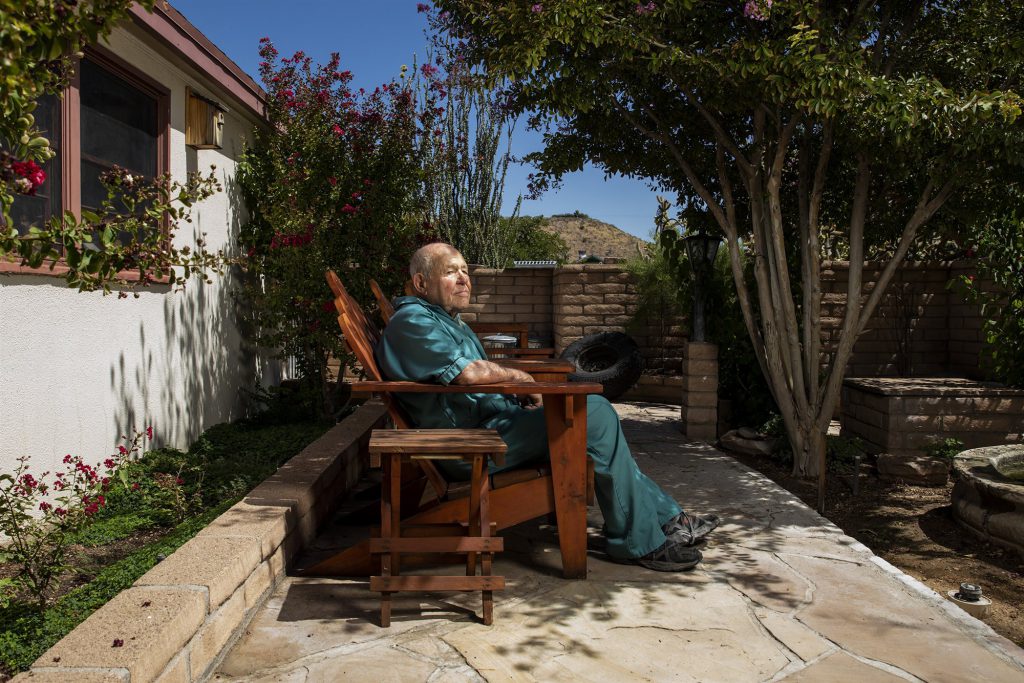
KINGMAN, Ariz. — Danielle Stephens ran her fingers down a long list of her relatives’ names and sighed.
All of them had been diagnosed with cancer. Most of them had died, many before they were 55.
Like Stephens, 81, they had all spent their lives in Kingman, Arizona, where during the Cold War they often watched the early morning sky lit up by orange flashes from atomic bombs detonated at a government testing site in the Nevada desert less than 150 miles north of the city.
“Back then, no one thought the tests were dangerous,” said Stephens, who ran a cattle ranch with her husband.
The list of her family members with cancer grew to 32 in July, when she was diagnosed with stage 4 colon cancer. It is the radiation exposure from those nuclear tests that Stephens believes caused her cancer and that of her family members and scores of others who lived in lower Mohave County in the 1950s and ’60s. Her relatives had breast, colon, thyroid and kidney cancer, all of which have been linked to radioactive fallout.
Biden says US must maintain small force in Middle East, has no plans for major Defense cuts
“The former vice president said the largest readiness issue facing the military is America’s strained relationship with NATO. “They’re worried as hell about our failure to confront Russia diplomatically or other ways, and worried about ‘America First’ meaning ‘America Alone,’” he said.”
By: STEVE BEYNON | STARS AND STRIPES/ stripes.com

DEMOCRATIC NATIONAL COMMITTEE
WASHINGTON — Former Vice President Joe Biden said Thursday that he supports drawing down troops in the Middle East but if elected president would keep a small force there to prevent extremists from posing a threat to the United States and its allies.
“These ‘forever wars’ have to end. I support drawing down the troops. But here’s the problem, we still have to worry about terrorism and [the Islamic State],” Biden told Stars and Stripes in a telephone interview.
He also said he does not foresee major reductions in the U.S. defense budget as the military refocuses its attention to potential threats from “near-peer” powers such as China and Russia.
Georgia: At crucial crossroads, nuclear plant must be stopped
“In 2001, 30 new reactors were ordered in the U.S., but the so-called “nuclear renaissance” rapidly fizzled leaving only Georgia Power and Vogtle. Meanwhile, renewable energy, in particular solar power, has become abundant and cheap, and solar and wind have been the fastest-growing energy sector for the past several years.”
BY: GLENN CARROLL | augustachronicle.com
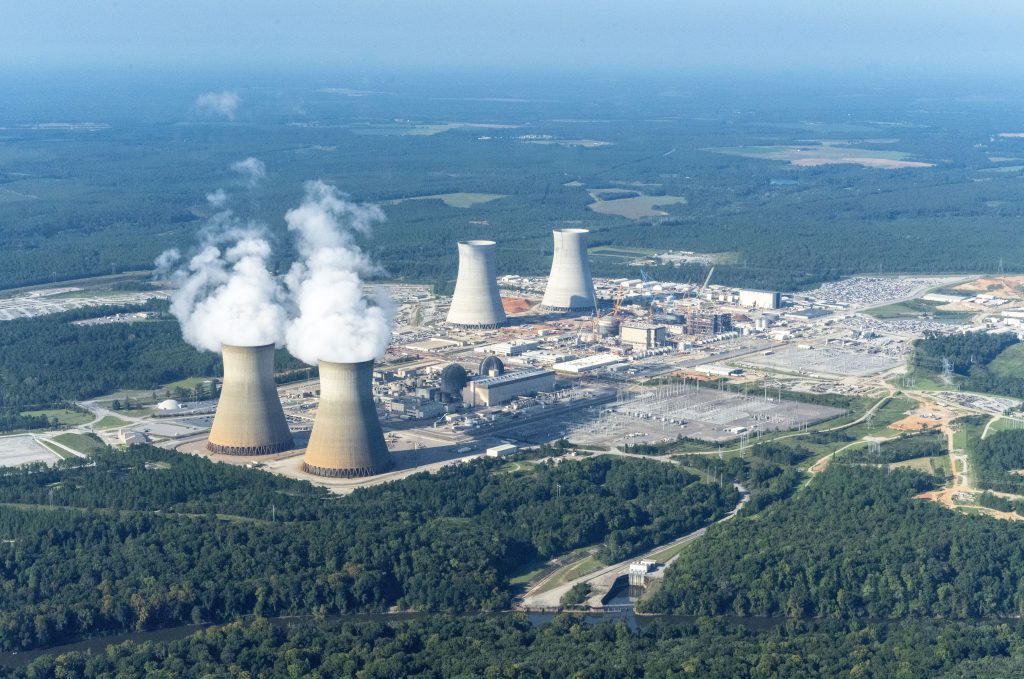
In 1977, a small group of thoughtful, committed Georgians started a grassroots anti-nuclear group to oppose nuclear power, nuclear weapons and radioactive waste and to promote alternative visions for renewable energy and world peace.
At the same time, Georgia Power was resuming construction of Vogtle 1 and 2, having nearly gone bankrupt three years earlier while attempting to build a four-reactor nuclear compound with a budget of $1 billion.
Only 10 weeks after breaking ground, incredibly, Vogtle construction ground to a halt with Georgia Power on the brink of bankruptcy. Georgia Power was saved by two emergency rate hikes thanks to the Georgia Public Service Commission and by selling shares of its hole-in-the-ground Vogtle to most of Georgia’s rural electric cooperatives and municipal power systems.
How to Talk About Nuclear Weapons
Why getting people to care about nuclear policy matters.
BY: ZACK BROWN | nationalinterest.org
It’s a truism of the nuclear field that arms control advocates don’t always win the war of words with their opponents, said Lynn Fahselt, co-founder and executive director of the communications organization ReThink Media.KINGMAN, Ariz. — Danielle Stephens ran her fingers down a long list of her relatives’ names and sighed.
“The first media audit we did showed that, on the opinion pages, we were being beat three to one,” she said in an interview with the podcast, Press The Button. “For every one argument we made for arms control and disarmament, our opposition was making two and calling ours naive.”
At first glance, this editorial record might seem like a minor datapoint in the grand scheme of nuclear politics. But in a fast-moving democracy whose attention span is only as long as the shortest news cycle, wins in the court of public opinion—even small ones—can affect government policy in real ways.
UPDATED: DOE INVOKED TECHNICAL STANDARDS
The following Directive has been added to the DOE Directives Portal:
The Directives Review Board (DRB) has conducted a review of DOE Orders that invoke Technical Standards. The DRB determined which Technical Standards should be invoked; developed boilerplate language for the invoking of Technical Standards; and updated affected Orders for clarity and consistency.
The following Orders were updated to clarify which Technical Standards are invoked:
- DOE O 458.1 Chg 4 (LtdChg), Radiation Protection of the Public and the Environment
-
- To establish requirements to protect the public and the environment against undue risk from radiation associated with radiological activities conducted under the control of the Department of Energy (DOE) pursuant to the Atomic Energy Act of 1954, as amended (AEA). Supersedes DOE O 458.1 Chg 3 (AdminChg), dated 1-15-2013.
-
Take Action! LANL Plans to Release Radioactive Tritium
CONCERNED CITIZENS FOR NUCLEAR SAFETY | nuclearactive.org
On Wednesday morning, the public was notified by Los Alamos National Laboratory (LANL) that releases of radioactive tritium could begin as early as Friday, September 11th. LANL tried to launch this plan last March. Communities organized against it and the project was halted. 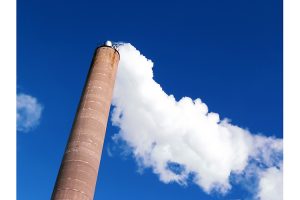
https://tewawomenunited.org/2020/09/action-alert-stop-radioactive-releases-at-los-alamos-national-laboratory , http://nuclearactive.org/lanl-plans-to-release-twice-the-amount-of-tritium-allowed/ , and http://nuclearactive.org/lanl-postpones-tritium-releases-due-to-global-pandemic/
If you were not signed up to receive emails from LANL’s Electronic Public Reading Room, you would not have received Wednesday morning’s notice. https://eprr.lanl.gov/ [The subscribe button is on the lower left.] The notice provided links to letters LANL submitted to the Environmental Protection Agency and the New Mexico Environment Department requesting permission to proceed with venting the four tritium containers. The containers hold lead and an estimated 114,000 curies of radioactive tritium.
The tritium is in the form of tritiated water, which harms when it is inhaled or ingested. https://ieer.org/article/energy-security/healthy-start-tritium-issue-38/
Now is the time of harvest. People are outside and breathing deeply while they bring in the harvest. The risk for breathing in particulates, pollutants, tritiated water, among other contaminants, has increased due to the COVID-19 global pandemic. Smoke and ash from the Medio wildfire significantly contributed to poor air quality for weeks, which was finally knocked down on Tuesday night when the rain and snow arrived. The link between increased COVID-19 death rates and air pollution are well known.
Environment Secretary Says LANL Tritium Venting Project Puts New Mexico In Bad Situation
“Under the Triad contract, one of their performance requirements for this fiscal year is to vent five more containers that are larger, that contain more tritium, by Sept. 30. So we feel like they’re trying to get permission to vent these four containers on Friday so that they can vent the other five before the end of the fiscal year so that they can get their bonus…This is a pattern in practice by DOE – to do things in order to get the bonuses for their contractors.” – Joni Arends, executive director of Concerned Citizens for Nuclear Safety
BY: MAIRE O’NEILL | losalamosreporter.com
The planned venting of tritium from four Flanged Tritium Waste Containers at Los Alamos National Laboratory on or after Friday, Sept. 11 has placed the state of New Mexico in a bad situation, New Mexico Environment Department (NMED) Sec. James Kenney told the Legislature’s Committee on Radioactive and Hazardous Materials Wednesday.
The Los Alamos Reporter previously published two stories on the venting project:
https://losalamosreporter.com/2020/03/23/lanl-to-conduct-tritium-venting-operation-beginning-in-april/
https://losalamosreporter.com/2020/04/03/lanl-tritium-ventilation-project-on-hold-due-to-covid-19-scope-of-work-amended-to-include-possible-secondary-venting/
“These containers have been neglected for so long by both DOE and the Environment Department. We’re in this position, which is do they vent those tritium drums, collect that emission to prevent it from being in the air and then move those drums offsite, or do we run the risk of leaving those drums onsite knowing that they are pressurized and could rupture meaning an uncontrolled amount of tritium would go out,” Kenney said. “I do not like the position our Department is in. I think this goes towards the fact that DOE did not do something sooner and it goes to the fact that our Department has been so underfunded that we don’t have the staff to go and hold people accountable to do those things in a timely manner, so we are in a very bad position.”
Big audience for protest of race training
Petersen says he tried to point out to lab officials the “blatant lies and deep immorality” in the presentations. He says he tried to teach his own classes to counter the training Sandia offered but was denied.
By: RYAN BOETEL / JOURNAL STAFF WRITER / abqjournal.com Copyright © 2020 Albuquerque Journal
A series of forums on race offered at Sandia National Laboratories left at least one lab employee miffed enough to send an email blast to the entire staff voicing his displeasure.
And the upset electrical engineer appears to have caught the attention of the White House, which last week in a memo told all federal agencies to stop hosting similar training sessions.
Trump Reportedly Claimed That The US Built a Secret Nuke. Here’s What He’s Probably Talking About
“In all likelihood, Trump is referring to the W76-2; then again, he’s also made outlandish claims regarding U.S. military tech that haven’t stood up under scrutiny, like that the F-35 is totally invisible.”
By: JARED KELLER / taskandpurpose.com
Forget the invisible F-35 and the super-duper missile: there’s apparently a brand new weapons system that’s captured the commander-in-chief’s attention — and it’s of the nuclear variety.
According to Rage — a new book published by legendary investigative reporter Bob Woodward on the Trump administration — the president reportedly disclosed the existence of a new nuclear weapons system during a conversation about relations between the United States and North Korea.
“I have built a nuclear — a weapons system that nobody’s ever had in this country before,” Trump reportedly said, according to the Washington Post.
“We have stuff that you haven’t even seen or heard about. We have stuff that Putin and Xi have never heard about before. There’s nobody — what we have is incredible.”
The disclosure from Trump came in “the midst of reflecting upon how close the United States had come in 2017 to war with North Korea,” according to the Washington Post.
State Lawmakers: Tougher Tactics Needed to Speed Los Alamos Waste Cleanup
“The state must put teeth back into the consent order, its main source of leverage. I would like to see us rip up the [2016] consent order and become a tougher negotiator for New Mexico,”
– State Sen. Jeff Steinborn, D-Las Cruces, said the state is losing ground on cleanup because an agreement between the state and the Department of Energy was weakened four years ago, and now more waste will be generated with pit production.
BY: Scott Wyland | santafenewmexican.com
The pace of Los Alamos National Laboratory’s legacy waste cleanup drew sharp criticism Wednesday from two state lawmakers who argued regulators should toughen oversight and consider suing federal agencies to spur quicker action.
The lab has made five shipments of higher-level nuclear waste this year to the Waste Isolation Pilot Plant in Carlsbad and hopes to move that number to 30 per year, with the aim of removing all of the lab’s legacy waste by 2027.
A U.S. Department of Energy official presented the figures to the state Radioactive and Hazardous Waste Committee on Wednesday.
“So we’re looking to greatly increase the rate of shipment,” said Steve Hoffman, who oversees the agency’s environmental management field office in Los Alamos.
But state Rep. Christine Chandler, D-Los Alamos, called that volume far too low, especially when compared to Idaho sending 100 to 150 waste shipments to WIPP each year.
New Mexico Frustrated With Slow Cleanup of Radioactive Waste
“We’re seeing more and more that we’re trending towards an impasse on the movement of legacy contamination from Los Alamos…If that’s our only option, then that’s an option we’re going to explore and we’re going to need to figure out how to do that in a way that yields a better result for New Mexico. Because right now we’re at the bottom of the list and that’s unacceptable.” – New Mexico Environment Secretary James Kenney
BY: The Associated Press, SUSAN MONTOYA BRYAN | krqe.com
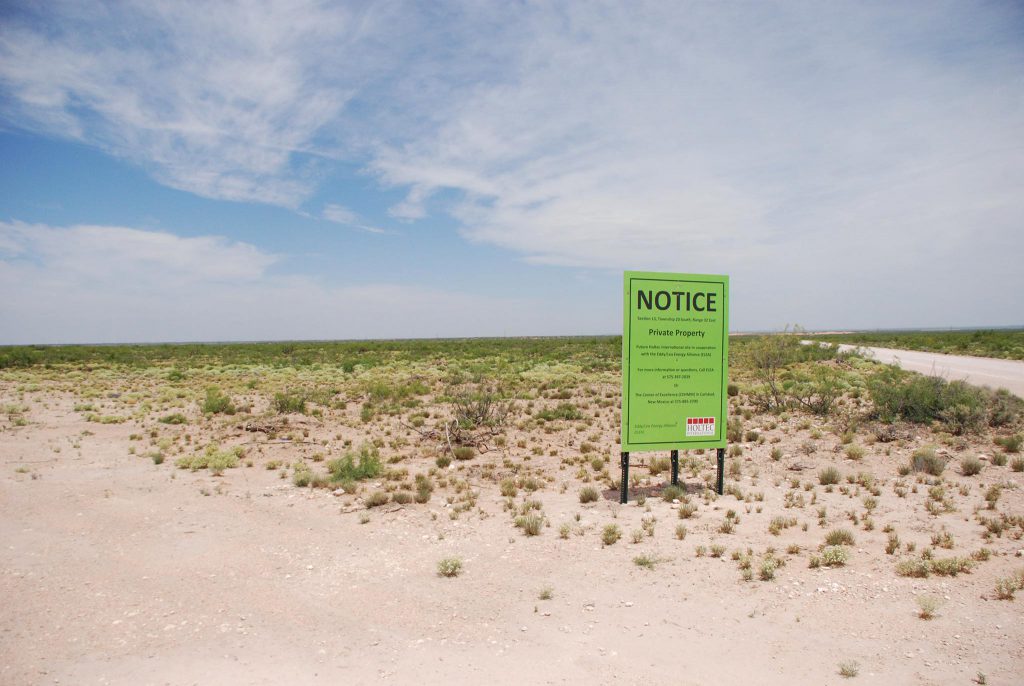
ALBUQUERQUE, N.M. (AP) — There’s growing frustration among New Mexico lawmakers and environmental regulators about the U.S. government’s slow pace in cleaning up contamination from decades of nuclear research and bomb-making at Los Alamos National Laboratory.
The officials shared their concerns during a legislative meeting Wednesday, saying New Mexico is taking a backseat to other states and that legal action might be their only leverage against the U.S. Energy Department as it sets priorities for the nation’s multibillion-dollar cleanup program for Cold War-era waste.
Since January, only five shipments of waste have been sent from Los Alamos to the government’s underground repository in southern New Mexico. Meanwhile, the Idaho National Laboratory is sending two to three shipments a week, or more than three times the goal environmental managers at Los Alamos have set for the coming year.
Russia warns it will see any incoming missile as nuclear
“The policy document offered a detailed description of situations that could trigger the use of nuclear weapons, including the use of nuclear weapons or other weapons of mass destruction against Russia or its allies.”
BY: The Associated Press, VLADIMIR ISACHENKOV | apnews.com
MOSCOW (AP) — Russia will perceive any ballistic missile launched at its territory as a nuclear attack that warrants a nuclear retaliation, the military warned in an article published Friday.
The harsh warning in the official military newspaper Krasnaya Zvezda (Red Star) is directed at the United States, which has worked to develop long-range non-nuclear weapons.
The article follows the publication in June of Russia’s nuclear deterrent policy that envisages the use of atomic weapons in response to what could be a conventional strike targeting the nation’s critical government and military infrastructure.
In the Krasnaya Zvezda article, senior officers of the Russian military’s General Staff, Maj.-Gen. Andrei Sterlin and Col. Alexander Khryapin, noted that there will be no way to determine if an incoming ballistic missile is fitted with a nuclear or a conventional warhead, and so the military will see it as a nuclear attack.
“Any attacking missile will be perceived as carrying a nuclear warhead,” the article said. “The information about the missile launch will be automatically relayed to the Russian military-political leadership, which will determine the scope of retaliatory action by nuclear forces depending on the evolving situation.”
The argument reflects Russia’s longtime concerns about the development of weapons that could give Washington the capability to knock out key military assets and government facilities without resorting to atomic weapons.
Groups raise concerns about new shaft at WIPP
“The Southwest Research and Information Center is among those opposing the project. The group filed legal challenges, saying environmental officials ignored existing regulations, past agency practices and case law when giving temporary approval for contractors to begin working.”
BY SUSAN MONTOYA BRYAN | santafenewmexican.com
ALBUQUERQUE — Crews working at the U.S. government’s underground nuclear waste repository in southeastern New Mexico are starting a new phase of a contentious project to dig a utility shaft that officials say will increase ventilation at the site where workers entomb the radioactive remnants of decades of bomb-making.
Officials at the Waste Isolation Pilot Plant near Carlsbad said this week the $75 million project is a top priority and that work will be done around the clock five days a week, with an additional shift on Saturdays. The shaft will eventually span more than four-tenths of a mile and connect to an underground system of passageways.
Surprising numbers in UNM report on lab’s impact
“BBER’s (UNM’s Bureau of Business and Economic Research) director Jeffrey Mitchell said in an email to a Regional Coalition official that the county financial figures show “there are some winners and some losers. I suspect that LANL was less interested in presenting that.”
BY JOURNAL NORTH EDITORIAL BOARD | abqjournal.com

A recent study by the University of New Mexico’s respected economic studies office details the huge economic impact of Los Alamos National Laboratory on New Mexico.
NCI Virtual Briefing on results from the Study to Estimate Radiation Doses and Cancer Risks Resulting from Radioactive Fallout from the Trinity Nuclear Test
| UPDATE FROM THE NCI SUMMARY:
“The data suggest that perhaps several hundred cancers, primarily thyroid cancer, have already occurred over the 75 years since the test and a small number are projected to occur in the future that would not have occurred in the absence of radiation exposure from Trinity fallout. Most of the excess cancers are projected to have occurred or will occur among residents living in Guadalupe, Lincoln, San Miguel, Socorro, and Torrance counties in 1945. Significant uncertainty in dose estimation had a substantial impact on the total uncertainty around these estimates. Most cancers that have occurred or will occur among the 1945 residents of New Mexico are likely to be cancers unrelated to exposures from Trinity fallout. Finally, with the data available, it is not possible to definitively identify the specific individuals whose cancers might be due to the radiation exposure. |
Former employees, families sue companies working on Piketon-area nuclear plant
“The lawsuit, filed last week, alleges workers and their families became ill due to the actions of U.S. Department of Energy contractors. The suit seeks a medical monitoring program to evaluate the multi-generational impact of radioactive contamination.”
Columbus, OH | Columbus Dispatch newsbreak.com
A lawsuit filed on behalf of former nuclear employees and their families accuses U.S. Department of Energy contractors of “poisoning workers and the people, land, air and water for miles” around the former Portsmouth Gaseous Diffusion Plant that was in southern Ohio.
The actions of DOE’s contractors released radioactive isotopes that “have created a situation akin to a creeping Chernobyl” and resulted in “injuries, sickness, disease, including cancers, damage to DNA, death, loss of and damages to property, and reduction in property values,” according to the lawsuit filed Thursday in U.S. District Court in Columbus.
The contamination likely spread in Pike, Scioto, Lawrence, Vinton and Adams counties in Ohio, according to the lawsuit.
Study: Cancer cases likely in those exposed to atomic test
“’The nuclear detonation exposed residents of New Mexico to varying levels of radiation from radioactive fallout, depending, in part, on where they lived in the state, how much time they spent inside protective structures in the immediate months after the test, and how much radiation entered their bodies through contaminated food and water,’ a summary of the research states.”
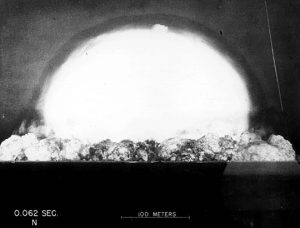
BY: SUSAN MONTOYA BRYAN | apnews.com
ALBUQUERQUE, N.M. (AP) — After years of study, the National Cancer Institute said Tuesday that some people probably got cancer from the radioactive fallout that wafted across New Mexico after the U.S. government detonated the first atomic bomb in 1945. However, the exact number is unknown.
Energy Dept. Taking Bids for Nationwide Waste Treatment Services
The Energy Department on Monday issued its final request for proposals (RFP) for nationwide low-level and mixed low-level waste treatment services. The agency could award more than one basic ordering agreement (BOAs) for the work, according to the document.
By: Exchange Monitor / exchangemonitor.com
The objectives of the BOAs are to provide Low Level Waste and Mixed Low Level Waste (including reactive metals such as lithium batteries, sodium bearing waste) Treatment services; Bulk Survey for Release Services (BSFR) services in accordance with Nuclear Regulatory Commission (NRC) or Agreement State requirements; Development and assessment of alternative disposition strategies; Low Activity Waste (LAW) services; and Ancillary services that aid in the treatment and processing of waste, such as transportation and packaging from the point of origin to the destination (treatment facility, disposal site, or return to the generator) creating a turnkey service.
Up to 1,000 Downwinders Likely Got Cancer From First Atomic Test, Study Says
As many as 1,000 New Mexicans living in communities near Trinity Site, where the first atomic bomb was detonated 75 years ago, might have developed cancer from the radioactive fallout, says a long-awaited Cancer Institute report released Tuesday.
BY: SCOTT WYLAND | santafenewmexican.com
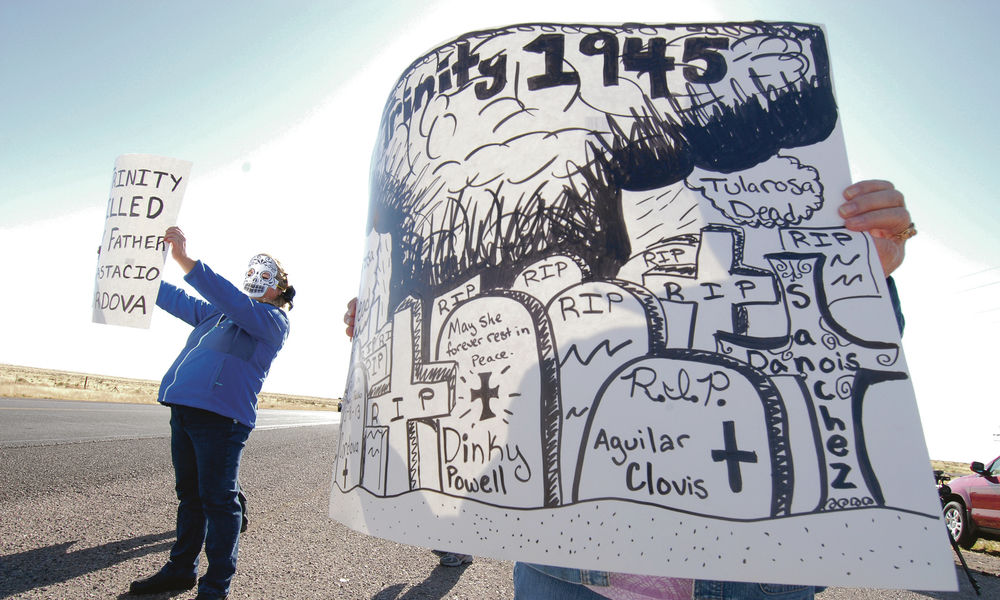
The institute’s findings were based on a six-year study that involved computer modeling, researching historical data and interviewing 210 elderly “downwinders” who lived close enough to the blast to suffer internal radiation exposure by ingesting contaminated milk and food.
The number of cancer victims could be less than 1,000 but is unlikely to be more, the study says.
There’s also no clear evidence the radiation was severe enough to cause genetic abnormalities that could be passed by birth to subsequent generations, the study says.
The study’s authors concede there’s much uncertainty in the report because so many years have passed since the test, the government didn’t conduct public studies of the test’s potential impacts on communities — due to the Manhattan Project’s secrecy — and cancer cases weren’t tracked nationally until the 1960s.
The report comes after decades of criticism from downwinder advocates, who have accused the federal government of refusing to acknowledge affected residents to avoid liability.
Some U.S. cities turn against first planned small-scale nuclear plant
“[Two] cities, Logan and Lehi, Utah have walked away from the project, and a third is now considering dropping its support because of risks and a lack of backers, according to officials.”
BY: Timothy Gardner, Nichola Groom | reuters.com
An artist’s rendering of NuScale Power’s small modular nuclear reactor plant. Courtesy NuScale/via REUTERS(Reuters) – The first U.S. small-scale nuclear power project, grappling with cost overruns and delays, faces another challenge: the defection of cities that had committed to buying its power. The more than 30 members of the public power consortium Utah Associated Municipal Power Systems (UAMPS) have until Sept. 30 to decide whether to stick with the project and devote more funds to NuScale Power LLC’s first-of-a-kind reactor.
SC Gov. McMaster objects to plutonium settlement and the $75 million in attorneys fees
BY JOHN MONK & SAMMY FRETWELL / thestate.com
The day before South Carolina’s attorney general announced a settlement that will bring $600 million to the state and start the process of removing deadly plutonium stores, Gov. Henry McMaster said he couldn’t support paying private lawyers in the deal $75 million or waiting two decades for the waste to be gone.
In a letter to S.C. Attorney General Alan Wilson written Sunday, McMaster said the roughly $75 million in fees the state will pay four S.C. law firms that worked on the deal — orchestrated by Wilson, the state’s members of Congress and Trump administration lawyers — is grossly excessive for the work they did.
“I simply cannot endorse the payment of $75 million in attorneys’ fees under the circumstances,” McMaster, a former state attorney general, told Wilson in a letter written Sunday.
In his letter, McMaster also said Wilson’s settlement agreement doesn’t give enough assurances that the U.S. Department of Energy will remove the deadly plutonium from South Carolina “in a timely manner.” The plutonium is stored at the Savannah River Site.
SC settles lawsuit over plutonium waste for record $600M
“According to a release, under the terms of the settlement, the Dept. of Energy remains obligated to remove the plutonium by 2037.”
BY: Alexx Altman-Devilbiss | wpde.com
FILE – In this Sept. 29, 1994 file photo, a CSX Train with spent nuclear fuel passes through Florence, S.C., on its way to Savannah River Site Weapons Complex near Aiken S.C. Nevada and South Carolina are jostling for a home-field advantage of sorts in a federal court battle that could result in a metric ton of weapons-grade plutonium being stored 70 miles from Las Vegas. (Jeff Chatlosh/The Morning News via AP, File)COLUMBIA, S.C (WPDE) — Attorney General Alan Wilson Monday announced the federal government will pay South Carolina $600 million and clean up weapons-grade plutonium to end six years of litigation.
“This settlement is the single largest settlement in South Carolina’s history. It is important to me that the people of South Carolina know of our long-term commitment to preventing South Carolina from becoming a dumping ground for nuclear waste,” said Wilson. “Additionally, the more than half a billion dollars in settlement money could not come at a better time as our state government and economy work to overcome the revenue shortfalls caused by the COVID-19 pandemic. It has been a long, difficult road but I am proud of the leadership displayed by our state’s elected officials and the expertise of my legal team.”
Nuclear War Makes a Comeback
It’s time to revisit the old fear that kept your parents up at night
BY CAROL POLSGROVE / sierraclub.org
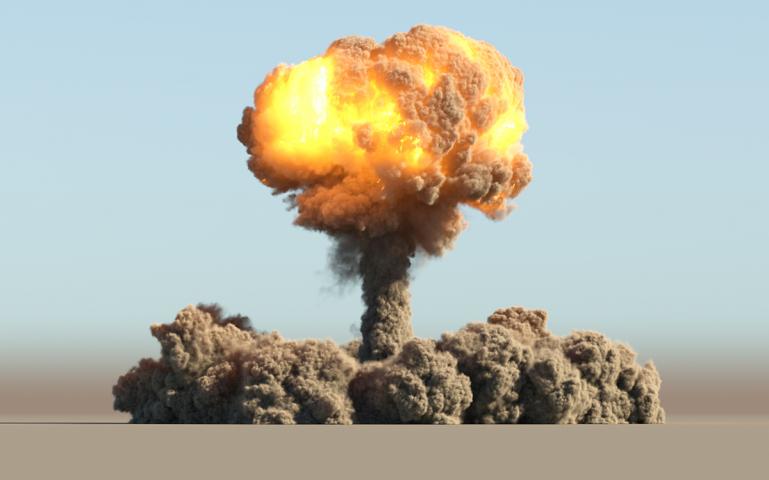
On websites where policymakers, scholars, and military leaders gather, concern about the possibility of nuclear war has been rising sharply in recent months as China, the United States, and Russia develop new weapons and new ways of using old ones.
On War on the Rocks, an online platform for national security articles and podcasts, Tong Zhao, a senior fellow at the Carnegie-Tsinghua Center for Global Policy, reported August 11 on public calls in China “to quickly and massively build up its nuclear forces” on the theory that only a “more robust nuclear posture” would prevent war with the United States.
The biggest nuclear arms budget ever is nearing approval in the US Congress, and the Trump administration has raised the possibility of resuming nuclear tests. President Trump has pulled the United States out of the 1987 Intermediate-Range Nuclear Forces (INF) treaty with Russia, while the New Start Treaty capping Russian and US nuclear warheads and delivery systems is set to expire next February if the two countries don’t agree to extend it.
Vatican representative calls on U.S. to sign nuclear-test-ban treaty
“The treaty is a critically important step toward creating a world without nuclear weapons…Each of the remaining eight states should strongly back up its words in favor of peace by being the first to sign.”
BY: Cindy Wooden | catholicnews.com
Pope Francis delivers a message about nuclear weapons at Atomic Bomb Hypocenter Park in Nagasaki, Japan, Nov. 24, 2019. (CNS photo/Paul Haring)VATICAN CITY (CNS) — The COVID-19 pandemic has highlighted the absurdity of “pouring valuable resources into the maintenance of weapons of destruction while so many on this planet are struggling to survive,” a Vatican representative told a U.N. meeting to commemorate and promote the International Day Against Nuclear Tests.
It is impossible to make a moral case for continued nuclear weapon testing,” said Msgr. Fredrik Hansen, charge d’affaires at the Permanent Observer Mission of the Holy See to the United Nations.
“There should never be another nuclear test explosion,” he told the online meeting Aug. 26.
The United Nations has designated Aug. 29 as the International Day Against Nuclear Tests, and Msgr. Hansen used the occasion to call on China, Egypt, India, Iran, Israel, North Korea, Pakistan and the United States to ratify the 1996 Comprehensive Nuclear-Test-Ban Treaty.
Nuclear News Archives – 2019
DOE for First Time Rejects Safety Board Recommendation – SRS Watch
SRS Watch and Nuclear Watch New Mexico have been working hard together on pit production issues. SRS Watch and NukeWatch NM, alongside other groups in ANA, have requested that the DNFSB now get involve in issue related to conversion of the canceled plutonium fuel (MOX) plant at SRS into a Plutonium Bomb Plant (PBP) to produce plutonium “pits” for nuclear weapons.
“The safety board informed ANA that it is monitoring the situation with pit production but we think they should actively be involved as NNSA continues to push this risky new mission on SRS,” said Clements of SRS Watch.
September 23 John F. Tierney, former US Representative and current executive director of the Council for a Livable World and the Center for Arms Control and Non-Proliferation, joins Joe Cirincione to discuss his work on the National Defense Authorization Act, and challenges the idea that US national security depends on ever-increasing defense spending.
News summary with Mary Kaszynski, Joe Cirincione, and Michelle Dover. Joe Cirincione answers a question from Clair in Massachusetts.
Listen, Subscribe and Share on iTunes · Spotify · SoundCloud · YouTube · Google Play · Sticher
Also available on ploughshares.org/pressthebutton
Sens. Warren, Sanders, Markey call on defense leaders to chill pit production push
Two Democratic presidential candidates believe there is no reason to produce 80 plutonium pits per year, as is planned, and have urged congressional defense leaders to step back and reconsider related legislation, according to a missive reviewed recently by the Aiken Standard.
September 23, 2019 | BY COLIN DEMAREST | aikenstandard.com
In a Sept. 13 letter, U.S. Sens. Bernie Sanders of Vermont and Elizabeth Warren and Ed Markey of Massachusetts described a significantly bolstered pit production mission as “unnecessary, unachievable and ill-advised,” citing an independent analysis that earlier this year cast serious skepticism on the National Nuclear Security Administration’s and U.S. Department of Defense’s recommended path forward.
That report, handled by the Institute for Defense Analyses, listed three cautionary findings in its publicly available summary: Reaching 80 pits per year is possible, but “extremely challenging”; no available option will likely satisfy the demand by deadline; and further risk assessment is needed.
A Congressional Budget Office study released earlier this year very roughly estimated pit production to cost $9 billion over the next decade.
Groups threaten to sue over nuclear weapons work at US labs
Copyright 2019 The Associated Press. All rights reserved.
LOS ALAMOS, N.M. — Nuclear watchdog groups say they will sue if the U.S. government doesn’t conduct a nationwide programmatic environmental review of its plans to expand production of key components for the nation’s nuclear arsenal.
Lawyers for the Natural Resources Defense Council, Nuclear Watch New Mexico, Savannah River Site Watch and Tri-Valley Communities Against a Radioactive Environment threatened legal action in a letter sent this week to officials.
In June, the National Nuclear Security Administration said it would prepare an environmental impact statement on pit-making at Savannah River. A less extensive review was planned for Los Alamos.
In Memoriam: Peter Stockton
“Stockton spent his life fighting The Man, and The Man in his sights was government corruption. Once he sank his teeth into an investigation he wouldn’t let go.”

WRITTEN BY: KEITH RUTTER pogo.org
When it comes to mononymous people in government oversight, “Stockton!” was at the top of the list. But he also had a first name. Peter Stockton, age 80, passed away Sunday, September 8. He is survived by, as he would say, “6 1/2 children and 10 grandchildren.”
I knew Peter for about 30 years. Let’s be honest—Peter Stockton was an acquired taste. He was blunt and gruff. “Stockton!” was usually followed by an expletive in many corners of DC, even by his friends. But he was a true champion of the nation’s taxpayers, and we will be poorer for the loss.
For over 30 years Stockton worked in government attempting to expose corruption (22 years of which were as a staffer for Representative John Dingell). In the 1970s, he investigated most of the major defense contractors and oil companies, the diversion of bomb-grade uranium to Israel, and the death of Karen Silkwood. His investigation into the construction and operation of the Alaskan Pipeline spanned from the 1970s into the 1990s. In the 1980s and early 1990s, he probed the security and effectiveness of the nuclear weapons production program and defense contractor fraud.
Senate panel wants probe into nuclear weapon glitches
Panel is concerned that problems might reflect fundamental oversight shortcomings that have broader implications
September 18, 2019 | BY JOHN M. DONNELLY | rollcall.com
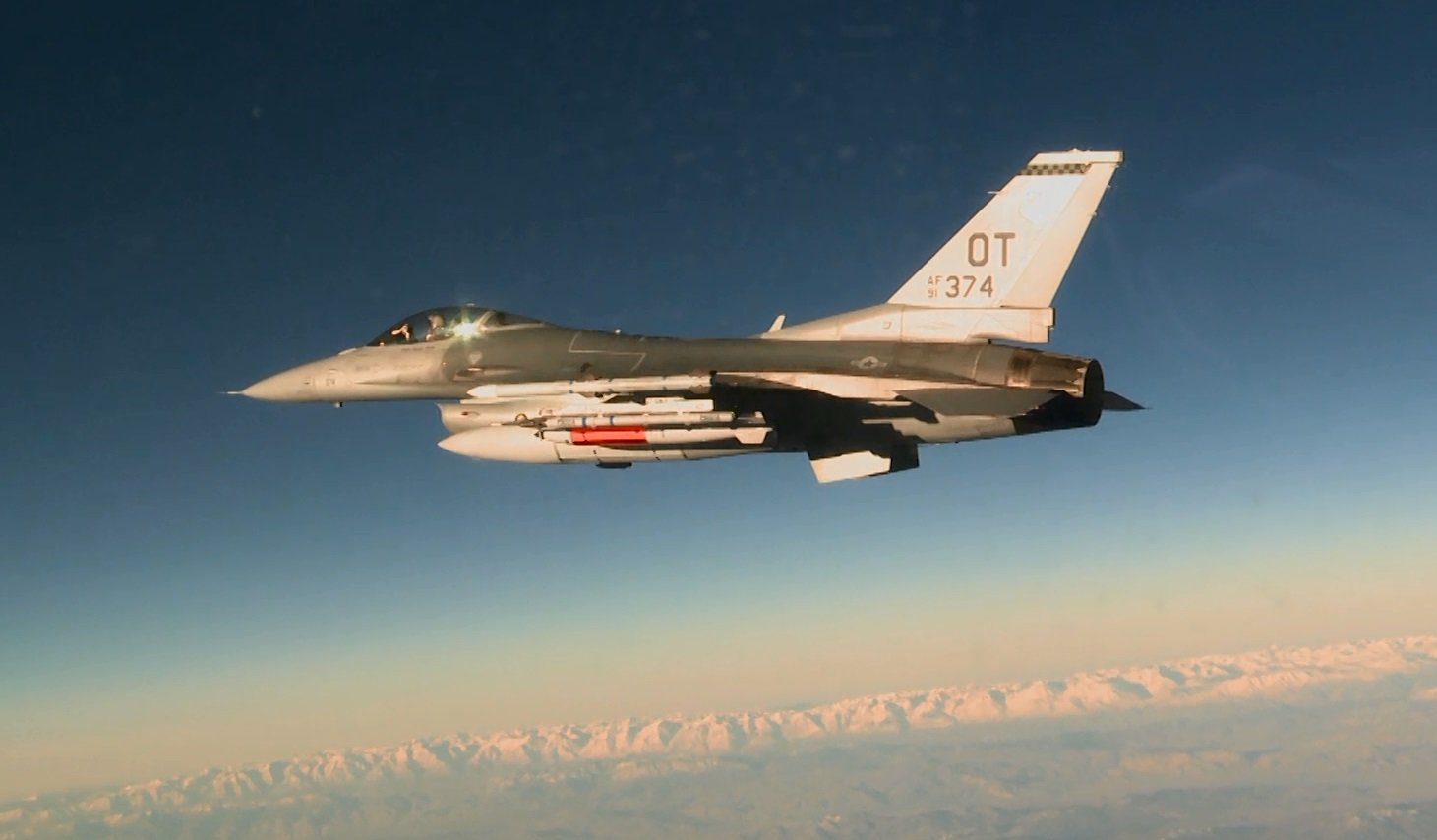
The Senate Appropriations Committee wants to order the Energy Department to launch an investigation into technical problems that have recently plagued U.S. nuclear weapons programs.
The committee’s mandate is buried deep inside the report accompanying the $48.9 billion Energy-Water spending bill (S 2470) for fiscal 2020 that the committee approved on Sept. 12.
Watchdogs Issue Second Demand to NNSA for Nation-Wide Environmental Review of Expanded Plutonium Pit Production
Public Interest Groups Challenge Plans to Fabricate Plutonium Pits for New, Unjustified Nuclear Weapons, at Los Alamos National Lab and Savannah River Site
COLUMBIA, SC, USA, September 17, 2019 /EINPresswire.com/
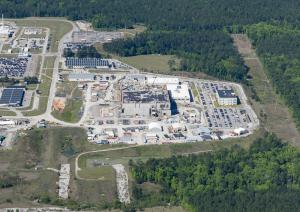
Today, lawyers for the Natural Resources Defense Council, Nuclear Watch New Mexico, Savannah River Site Watchand Tri-Valley Communities Against a Radioactive Environment sent a second letter to Department of Energy (DOE) Secretary Rick Perry and Lisa Gordon-Hagerty, the head of the semi-autonomous National Nuclear Security Administration (NNSA). The letter demands a nation-wide programmatic environmental impact statement (PEIS) for the agencies’ proposed expanded production of plutonium pits, the fissile cores or “triggers” of nuclear weapons.
Jay Coghlan, Nuclear Watch New Mexico director, noted, “The Los Alamos Lab has a long track record of nuclear safety problems that must be resolved before expanded plutonium pit production is even considered. The government’s claimed need for expanded production needs to be critically examined in a new nation-wide supplemental PEIS for its environmental impacts, costs and potentially adverse national security impacts. Following that, given the massive changes proposed for LANL due to expanded pit production, NNSA will also have to prepare a new site-specific site-wide environmental impact statement for the Los Alamos Lab.”
Pelosi Names Conferees to National Defense Authorization Act Conference
Washington, D.C. – Speaker Nancy Pelosi today named House Democrats to serve on a conference committee of the House and Senate versions of the FY 2020 National Defense Authorization Act (NDAA):
September 17, 2019 | Press Release Link: https://www.speaker.gov/newsroom/91719-1
“Democrats have always stood for a strong and smart national defense,” said Speaker Nancy Pelosi. “In July, House Democrats were proud to pass a responsible NDAA that keeps our nation safe while reducing wasteful spending, maintaining a tough stance on Russia, solidifying Congress’s oversight role over defense initiatives and advancing our bedrock American values. Our skilled Democratic Conferees will bring their expertise to ensure that the FY 2020 NDAA maintains key Democratic priorities, including a critical pay raise for our brave men and women in uniform, lifesaving support for veterans and military families and prohibiting any defense funds from being used to build the President’s wasteful, ineffective border wall. Guided by the leadership and vision of our Conferees, House Democrats will never waver from our responsibility to support those who serve and defend our country.”
September 17 War Hawk Down: A deep dive with into the firing of John Bolton, his record of failure, and how his core beliefs and worldview are deeply indicative of the way that Washington thinks about national security.
Special Guest: Trita Parsi. “In The Silo” explores at Chain Reaction, our annual fundraising gala. This year featured a tribute to Lew Butler, the founding Chair of the Board of Directors. News summary with Mary Kaszynski, Joe Cirincione, and Michelle Dover. Joe answers a question from Ben in Scotland.
Listen, Subscribe and Share on iTunes · Spotify · SoundCloud · YouTube · Google Play · Sticher
Also available on ploughshares.org/pressthebutton
A terrifying new animation shows how 1 ‘tactical’ nuclear weapon could trigger a US-Russia war that kills 34 million people in 5 hours
- A new simulation called “ Plan A,” by researchers at Princeton’s Program on Science and Global Security, shows how the use of one so-called tactical or low-yield nuclear weapon could lead to a terrifying worldwide conflict.
- In the roughly four-minute video, a Russian “nuclear warning shot” at a US-NATO coalition leads to a global nuclear war that leads to 91.5 million deaths and injuries.
- Under President Trump, the US is ramping up production of tactical nuclear weapons, ostensibly to target troops and munitions supplies. While advocates say these weapons would keep wars from escalating, the simulation finds the opposite outcome.
- The dissolution of the INF treaty in August raised the stakes for nuclear war, as both the US and Russia were free to develop weapons previously banned under the treaty.
- “The risk of nuclear war has increased dramatically in the past two years,” the project states. Nuclear strikes are an extremely remote possibility, but their chances are rising experts warn.
More than 91 million people in Russia, the US, and NATO-allied countries might be killed or injured within three hours following a single “nuclear warning shot,” according to a terrifying new simulation.
European Leadership Network Group Statement on Nuclear Arms Control
Ahead of the 74th session of the United Nations General Assembly, over 100 members of the European Leadership Network’s network of political, diplomatic and military figures call on leaders at UNGA to address rising nuclear risk, and renew commitments to international nuclear diplomacy and arms control.
The full statement and list of signatories is reproduced in English below, and is also available in French, German, Italian, and Russian. ************
As world leaders prepare to meet this month at the United Nations in New York, we call on them to take urgent steps to reduce the risks of nuclear confrontation. We join a growing number of international leaders in raising the alarm over new nuclear dangers.
Last month we witnessed the end of the landmark US-Russia Intermediate Nuclear Forces Treaty (INF). Today, there are grave doubts over the future of the only remaining agreement that limits and regulates Washington and Moscow’s strategic nuclear weapons, the New Strategic Arms Reduction Treaty (START). And new challenges confront the Comprehensive Nuclear-Test-Ban Treaty (CTBT).
Stability is eroding and risks are rising. North Korea has grown its nuclear weapon stockpile, tests missiles, and continues to feel threatened. The fate of inter-Korean and US-DPRK dialogue remains uncertain. Tensions are flaring between nuclear rivals India and Pakistan. And, following Washington’s unilateral breach and resumed sanctions, Iran may walk away from the nuclear deal that constrains its ability to develop nuclear weapons.
Moreover, new military technologies threaten to destabilise global and regional nuclear confrontations. These technologies are rapidly evolving and entirely uncontrolled.
The risks of nuclear accident, misjudgement or miscalculation have not been higher since the Cuban Missile Crisis. Complacency should not be an option. It is not only European security at stake.
The Catastrophic Tenure Of John Bolton
“The national security adviser’s principal responsibility has traditionally been to oversee a disciplined policymaking process that includes the State Department, the Pentagon and intelligence agencies, and to tee up big decisions for the president,” editorialized The Washington Post the night of Bolton’s firing, “Mr. Bolton didn’t do that.”
BY JOE CIRINCIONE | lobelog.com Sep. 11, 2019
Seventeen months ago, before Bolton became Donald Trump’s third national security advisor, the United States still had a deal that had stopped Iran’s nuclear program in its tracks. More, it had rolled it back to a fraction of its original size and boxed it into the most intrusive inspection regime ever negotiated. It was a deal for the ages. All of Trump’s military, intelligence and security advisors and our closest allies urged Trump to stay in the accord. Bolton destroyed it in two months, pushing Trump to violate it and impose draconian sanctions on Iran.
“Withdrawing from the Iran Nuclear Deal should be a top Donald Trump administration priority,” Bolton tweeted in July 2017, months before his appointment. “The declared policy of the United States should be the overthrow of the mullahs’ regime in Tehran,” he shouted at an MEK rally in July 2017, promising them that they would all celebrate in Tehran “before 2019.”
Today, Iran is slowly pealing away from the deal, too, taking baby steps towards restarting capabilities that someday could allow it to make the material for a bomb, should it decide to do so. No new deal. No better deal. No regime change. No celebration in Tehran. “Trump has spent years making a mess of Iran policy for no reason other than right wing politics and incompetence,” tweeted former Deputy National Security Advisor Ben Rhodes as news of Bolton’s sacking spread.
California lawmaker aims to stop closure of Diablo Canyon nuclear plant
Assemblyman Jordan Cunningham, R-Templeton (San Luis Obispo County), on Wednesday proposed a state constitutional amendment that would designate nuclear power as a source of renewable energy.
BY J.D. MORRIS | sfchronicle.com Sep. 4, 2019
Cunningham and two pro-nuclear organizations who support his amendment think its passage would make Diablo Canyon worth as much as $3.6 billion. A statement from Cunningham’s office said prolonging the life of Diablo Canyon would help the state fulfill its climate goals and “provide ratepayers with a cheap and constant source of energy for decades to come.”
But John Geesman, an attorney for the Alliance for Nuclear Responsibility, an anti-nuclear nonprofit, viewed the amendment as an attempt to prop up Diablo Canyon’s finances and said it had little chance of garnering the support it needs in the Legislature and electorate.
“That’s two mountains they’re probably incapable of climbing, realistically,” Geesman said. “The public just doesn’t want this stuff.”
PG&E spokeswoman Lynsey Paulo said the company would review the proposed amendment.
Trump fires John Bolton
Washington (CNN) President Donald Trump abruptly announced in a tweet Tuesday that he has asked national security adviser John Bolton to resign, noting that he “strongly disagreed with many” of Bolton’s suggestions “as did others in the administration.”
….I asked John for his resignation, which was given to me this morning. I thank John very much for his service. I will be naming a new National Security Advisor next week.
— Donald J. Trump (@realDonaldTrump) September 10, 2019
September 10 Hans Kristensen of the Federation of American Scientists joins Joe Cirincione to discuss Chinese and Russian nuclear modernization plans, and the state of nuclear arsenals around the world.
Leon Ratz joins Early Warning to discuss Iran’s latest announcement about its nuclear program, Russia’s plans to produce new weapons, and Congress’s return to Washington. Joe Cirincione and Michelle Dover answer a question from Gerrard on how citizens can influence their leaders to support nuclear weapons prohibition.
Listen, Subscribe and Share on iTunes · Spotify · SoundCloud · YouTube · Google Play · Sticher
Also available on ploughshares.org/pressthebutton
Radioactive Barges Are Killing the Vibe on This Russian Beach After Deadly Missile Blast
A pair of pontoon barges suspected of being doused in radioactivity during a deadly nuclear missile accident in Russia washed up on a local beach three weeks ago, where they’ve reportedly been leaking radiation into the sea and sand ever since.
BY GREG WALTERS | vice.com
They landed near the mouth of the Verkhovka river, and have been sitting there with no official warning signs beyond a dirty red shirt stretched between two wooden poles, according local Russian media.
Radiation measurements as high as eight times normal background levels were taken on Aug. 31 from a distance of 150 meters, while earlier tests soon after the pontoons arrived peaked as high as 38 times normal, the outlet said. Those levels are still well short of life-threatening, but measurements closer to the barges haven’t been made.
“No idiots could be found to check the levels on the pontoons themselves without protection,” the local TV presenter deadpanned during a broadcast Monday.
One of the two barges washed up at the mouth of the Verkhovka River a day after the explosion, on Aug. 9. The other was left there by tugboats four days later, Belomorkanal reported.

Readings taken on Saturday, Aug. 31 measured from 70 to 186 microroentgen per hour. Earlier measurements in August peaked at 750 microroentgen per hour. Normal local background levels in the area are closer to 20 microroentgen per hour, according to Greenpeace.
There’s not enough data yet to know what the levels are like on the barges themselves.

Nuclear Weapons Build-Up Insanity, Los Alamos Lab so-called “Clean-Up” – Jay Coghlan, Nukewatch NM – NH #428
Nuclear weapons – a reminder of what they look like and what they can do.
LISTEN HERE:
Nuclear weapons – their design, engineering, chances for implementation – that’s the topic we explore with Jay Coghlan, Executive Director of Nukewatch NM. Jay goes over the division of responsibility for nuclear weapons of mass destruction between Los Alamos National Laboratory(LANL), Sandia Laboratory, and California’s Lawrence Livermore Lab. He then rips into Department of Energy for the lies and “theatre” surrounding claims of a “more-than-halfway-completed” so-called “clean-up” of LANL that ignores the vast majority of radioactive contamination… and ultimately is funding the new nuclear arms race.
9 LANL waste containers denied shipment to WIPP
Barrels filled with transuranic waste fail inspection, remain at lab’s Plutonium Facility
BY TRIS DEROMA | lamonitor.com
DNSFB reports: https://www.dnfsb.gov/sites/default/files/document/18696/Los%20Alamos%20Week%20Ending%20July%2026%202019.pdf
Nine containers full of transuranic waste are stuck at the Los Alamos National Laboratory’s Plutonium Facility after the Carlsbad Waste Isolation Pilot Plant refused to take them in back in July.
The containers, which hold waste items such as gloves, tools and other items that have come into contact with radiological materials, were scheduled to be shipped to WIPP during the week of July 26.
The Department of Energy’s contractor N3B that operates WIPP inspected the drums at LANL prior to the shipping date and determined that the drums contained materials that could combust.
N3B Spokesman Todd Nelson said that there was never a chance the containers would have made it to WIPP in the condition they were in.
September 3 Barbara Slavin, Director of the Future of Iran Initiative at the Atlantic Council, joins Joe Cirincione to discuss increasing tensions in the Middle East and the effects of Trump administration’s ‘maximum pressure’ campaign toward Iran.
Michelle Dover hosts Early Warning with Joe Cirincione and Tom Collina on the anniversary of the USSR’s first nuclear test. Michelle Dover and Joe Cirincione answer a question from Patrick about who in the US government is taking current nuclear weapons risks seriously.
Listen, Subscribe and Share on iTunes · Spotify · SoundCloud · YouTube · Google Play · Sticher
Also available on ploughshares.org/pressthebutton
Younger retiring as director of Sandia Labs
Sandia National Laboratories Director Steve Younger is retiring after two years on the job.
BY SCOTT TURNER / JOURNAL STAFF WRITER | abqjournal.com August 27, 2019
Copyright © 2019 Albuquerque JournalYounger told employees at the labs in an email Monday, saying he informed the National Technology and Engineering Solutions Board of Managers of his intent to retire on Dec. 31.
“The Board is actively engaged in a systematic search for my successor,” he said in the email.
Younger, 67, took the helm at Sandia on May 1, 2017, as the lab changed management for only the second time in its history. Younger has led the management entity NTESS of Sandia, a wholly owned subsidiary of Honeywell International, which took over from Lockheed Martin.
“Since arriving at the laboratories, I have been truly impressed with the impact that you have on the security of our nation and the world,” Younger told employees.
Younger said his role as a nuclear weapons researcher has made him keenly aware of the need to understand conflict avoidance.
The New Nuclear Arms Race Is Here. And Russia’s Already Paying the Price.
Meet 4 new nuclear weapons systems the Kremlin is testing — right now.
BY GREG WALTERS | vice.com
Russian President Vladimir Putin, right, listens to President of National Research Center “Kurchatov Institute” Mikhail Kovalchuk, as he visits Kurchatov Institute of Atomic Energy, the home of the Soviet nuclear weapons program and later Soviet and Russian non-military nuclear technologies in Moscow, Russia, Tuesday, April 10, 2018. (Alexei Nikolsky, Sputnik, Kremlin Pool Photo via AP)At the funeral for 14 Russian sailors, Captain Sergei Pavlov hailed the “blameless heroes” for dousing the fire that broke out on their nuclear spy submarine, called the Losharik, during a secret mission last month.
“At the cost of their lives,” Pavlov said, “they prevented a catastrophe on a planetary scale.”
But as Russia tests and deploys an array of exotic new nuclear weapons, fears are mounting that the next nuclear mishap may not be so easily contained.
This summer alone, Russia has suffered some two-dozen casualties in accidents related to exotic nuclear hardware, including the mysterious explosion linked to the Skyfall missile program that killed seven and sent local radiation levels spiking in a nearby city.
The deadly incidents are stoking fears of a return to Cold War-style runaway nuclear arms development, accompanied by dangerous accidents and Soviet-style cover-ups.
“We need to acknowledge that the Russians are engaged in wacky programs,” said Aaron Stein, a nuclear nonproliferation expert at the Foreign Policy Research Institute. “It’s indicative of an arms complex that has been cut loose to pursue exotic, silly projects. And it’s dangerous.”
You can blame the renewed U.S.-Russian arms race, which nuclear experts warn is driving Russia to recklessly experiment with “absurd” new ideas.
On 29 August, the International Day against Nuclear Tests, Kazakhstan deposited its instrument of ratification for the Treaty on the Prohibition of Nuclear Weapons, becoming the 26th state party.
From 1949 to 1989, an estimated 456 Soviet nuclear tests — including 116 atmospheric tests — were carried out at the Semipalatinsk test site in Kazakhstan, with devastating long-term consequences for human health and the environment.
Upon the break-up of the Soviet Union, Kazakhstan inherited approximately 1,400 nuclear warheads, which it subsequently gave up — recognizing that its security was best achieved through disarmament.
The date of 29 August 2019 has special significance for Kazakhstan. It marks 70 years since the first Soviet nuclear test at the Semipalatinsk site and 28 years since the formal closure of that site.
We congratulate Kazakhstan on its ratification and we acknowledge the persistent efforts of Alimzhan Akhmetov, of the Center for International Security and Policy in Kazakhstan, to encourage the Kazakh government to take this important step.
Pakistan ups nuclear rhetoric, carries out launch of ballistic missile
BY AJAY BANERJEE | tribuneindia.com Tribune News Service New Delhi August 29, 2019
Pakistan has successfully test-fired surface-to-surface ballistic missile ‘Ghaznavi’, capable of delivering multiple warheads up to 290 km, the Army said on Thursday, amid fresh Indo-Pak tensions after India revoked Jammu and Kashmir’s special status.
Pakistan on Wednesday closed three aviation routes of the Karachi airspace till August 31, which had promoted speculation about the possible missile-testing.
Pakistan successfully carried out night training launch of surface to surface ballistic missile Ghaznavi, capable of delivering multiple types of warheads upto 290 KMs. CJCSC & Services Chiefs congrat team. President & PM conveyed appreciation to team & congrats to the nation. pic.twitter.com/hmoUKRPWev
— DG ISPR (@OfficialDGISPR) August 29, 2019
With this, Pakistan upped its ‘nuclear rhetoric’. The Director General of Inter Service Public Relations (DG-ISPR) said Pakistan on Wednesday night tested a short range nuclear missile in Sindh.
France Is Still Cleaning Up Marie Curie’s Nuclear Waste
Her lab outside Paris, dubbed Chernobyl on the Seine, is still radioactive nearly a century after her death.
BY TARA PATEL | bloomberg.com
Marie Curie working at the Radium Institute, a radioactivity laboratory created for her by the Pasteur Institute and the University of Paris at the University of Paris, 1925. PHOTOGRAPHER: SCIENCE SOURCEIn 1933 nuclear physicist Marie Curie had outgrown her lab in the Latin Quarter in central Paris. To give her the space needed for the messy task of extracting radioactive elements such as radium from truckloads of ore, the University of Paris built a research center in Arcueil, a village south of the city. Today it’s grown into a crowded working-class suburb. And the dilapidated lab, set in an overgrown garden near a 17th century aqueduct, is sometimes called Chernobyl on the Seine.
No major accidents occurred at the lab, which closed in 1978. But it’s brimming with radioactivity that will be a health threat for millennia, and France’s nuclear watchdog has barred access to anyone not wearing protective clothing. The lab is surrounded by a concrete wall topped by barbed wire and surveillance cameras. Monitors constantly assess radiation, and local officials regularly test the river.
“We’re proof that France has a serious nuclear waste problem,” says Arcueil Mayor Christian Métairie. “Our situation raises questions about whether the country is really equipped to handle it.”
Nuclear power accounts for almost three-fourths of France’s electricity, vs. a fifth in the U.S. There’s no lasting solution for the most dangerous refuse from the country’s 906 nuclear waste sites, including some of what’s in Arcueil.
Women’s Equality Day 2019: Diversity Encourages Innovation

nuclear diplomacy needs more women
“Negotiating successfully requires having the best people, regardless of gender, and recognizing that diversity enhances innovation.”
The story of women in nuclear security reflects many of the broader lessons we’ve learned about gender and politics: that women’s contributions have often been ignored or excluded, risking policies that lack key perspectives, nuance and debate. With today’s high stakes, we need national security policy that includes all of the best ideas. New and lasting solutions require diversity of representation and experience if we’re to solve the issues surrounding humanity’s survival.
https://www.washingtonpost.com/outlook/2019/05/23/why-nuclear-diplomacy-needs-more-women/
Arms Control Association: #ThisWeek in Nuclear History: The Soviet Union detonated its first nuclear weapon on August 29, 1949 at Semipalatinsk in the Soviet republic of Kazakhstan. Tests continued at the site until 1989 with little regard for their effect on the local people or environment. After the Soviet Union’s collapse in 1991, tests ended at the site and it was officially closed on Aug 29, 1991. The International Day against Nuclear Tests is now observed annually on August 29.
Trump Wanted to Nuke Hurricanes to Stop Them From Hitting U.S. Coast: Report
“I got it. I got it. Why don’t we nuke them?” [Trump said] according to one source who was there.
It makes sense that the president doesn’t like heavy winds. Photo: AFP Contributor/AFP/Getty ImagesBY MATT STIEB | nymag.com August 26, 2019
The president’s understanding of the natural world isn’t particularly deep. He thinks that the noise from wind turbines causes cancer. He’s called climate change a hoax and thinks that cold weather in the winter disproves global warming. He might not get how rivers work, and he definitely doesn’t understand how to stop a forest fire: Last year, he suggested a proper raking could have stalled the disastrous Camp Fire, which killed 83 Californians.
How Congress Can Prevent a Meltdown of Global Nuclear Arms Control
The end of the INF Treaty was a mistake but building new low-yield nukes and leaving New START would be disastrous.
BY TOM COUNTRYMAN & LAURA KENNEDY | nationalinterest.org
Image: ReutersThe Trump administration’s nuclear weapons policy has eroded decades of agreed-upon norms. An important arms control agreement with Russia was already shredded, and another is on the brink of being abandoned. Instead of adhering to its commitments under the Nuclear Non-Proliferation Treaty (NPT), which calls for good-faith steps towards the ultimate goal of nuclear disarmament, the Trump administration’s Nuclear Posture Review (NPR) released last year called for, among other things, new “low-yield” nuclear weapons that are considered likely to lower the nuclear threshold. Fortunately, Congress now has an opportunity to push back on these damaging departures from long-standing policies that have so far prevented nuclear annihilation.
House and Senate negotiators will soon meet to begin reconciling major differences in their versions of the Fiscal Year 2020 National Defense Authorization Act (NDAA). Among the many issues that must be addressed, that of nuclear weapons is poised to be one of the most controversial.
August 27 Lynn Rusten of the Nuclear Threat Initiative (NTI), sits down with Joe Cirincione to discuss the history of arms control between the United States and Russia, and how the Trump administration’s actions have put the New START treaty in danger.
Michelle Dover hosts Early Warning with Roger L. Hale Fellow Catherine Killough and Matt Korda, Research Associate at the Federation of American Scientists. Also, Michelle Dover and Joe Cirincione answer a question from Henry about US-North Korea relations.
Listen, Subscribe and Share on iTunes · Spotify · SoundCloud · YouTube · Google Play · Sticher
Also available on ploughshares.org/pressthebutton
Total eclipse: Nuclear power regulation slips deeper into the shadows
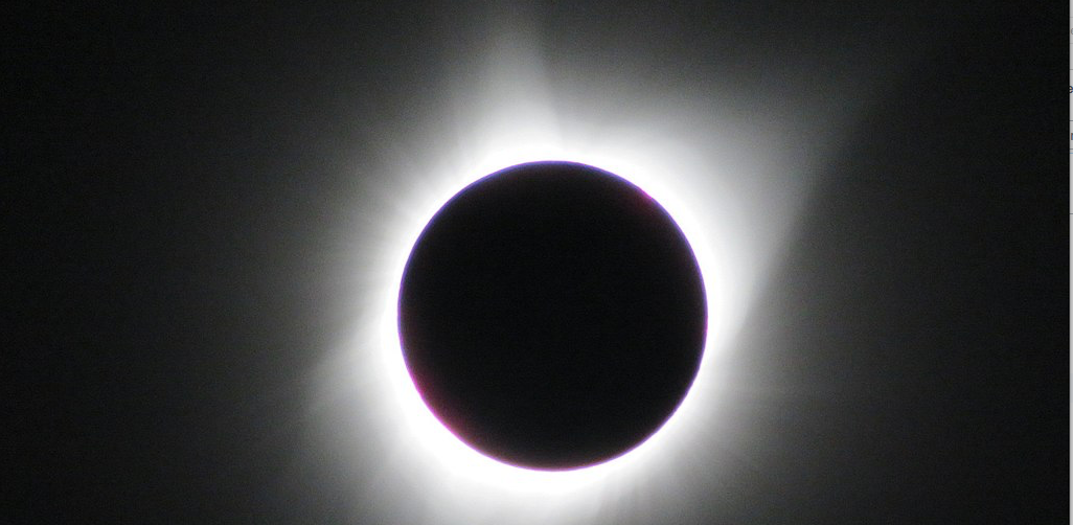
BY PAUL GUNTER | beyondnuclearinternational.org
On July 17, 2019, the United States Nuclear Regulatory Commission (NRC) held its regularly scheduled information exchange meeting with the nuclear industry’s Institute for Nuclear Power Operations (INPO) at NRC Headquarters in Rockville, Maryland.
INPO is a secretive industry task force headquartered in Atlanta, Georgia, led by the nation’s senior nuclear utility executives. Industry watchdogs often refer to INPO as “the shadow regulator” of the U.S. atomic power industry.
It is significant that NRC management chose this brief hour-long meeting in July with INPO to make a public announcement that the nation’s federal regulatory agency is proposing to dramatically cut back its “Regulatory Oversight Process” in what is being called a “transformative process.”
The Waste that Remains
Los Alamos Labs hit with $222,313 fine for safety violations. Meanwhile, clean-up of legacy sites may permanently seal waste in the ground.
BY LEAH CANTOR | sfreporter.com
Workers excavating a waste disposal site | US Department of EnergyEven as Los Alamos National Labs takes on contracts for new weapons manufacturing, taxpayers are still shelling out for the clean-up costs of contamination dating back to atomic bomb testing. The latest clean-up proposals will likely leave hazardous waste in the ground. Meanwhile, recent hazardous waste safety violations add up to $222,313.
N3B, the company recently contracted by the US Department of Energy to complete a significant portion of remaining clean-up efforts, gave a presentation to the public at the Santa Fe Community College on Thursday as part of a series of community meetings leading up to the process to decide methods for cleaning up several contaminated legacy waste sites around LANL.
…The DOE reported that 1,168 of 2,123 contaminated sites have been cleaned and 10,000 cubic meters of radioactive waste removed, leaving 5,000 cubic meters of waste remaining identified for clean-up. Yet, according to watchdog group Nuke Watch New Mexico, that leaves 690,251 cubic meters of waste permanently buried on-sight in unlined pits and shafts above a regional aquifer that provides drinking water for San Ildefonso Pueblo, Española, Los Alamos and Santa Fe, among other communities. Nuke Watch Executive Director Jay Coghlan tells SFR this number is from analysis of publicly available LANL documents and data.
Russian Nuclear Blast Theories Hint at No-Holds-Barred Arms Race
Amid the mysteries surrounding a deadly blast at a Russian military facility that killed at least five researchers and caused a brief radiation spike, one thing is clear: the new arms race is going full speed.
BY JAKE RUDNITSKY & ILYA ARKHIPOV | bloomberg.com
Burevestnik/SSC-X-9 Skyfall missile. Source: Russian Ministry of DefenceThe Aug. 8 explosion at a remote testing facility in the White Sea has remained a tightly guarded secret by the military, with Russian radiation-monitoring stations suddenly failing to send their data to international agencies in the days that followed. President Vladimir Putin would say only that the accident involved “work on promising weapons systems” that Russia is developing in response to “what our partners, including the Americans, are testing.”
President Donald Trump was more forthcoming in a tweet on the mishap, saying it involved a new nuclear-powered cruise missile known in the West as “Skyfall” but adding that the U.S. version is better. Putin’s spokesman insisted Russia’s is superior.
New Mexico has enough nuclear waste
We cannot not let the U.S. Department of Energy and the out-of-state nuclear waste generators turn New Mexico into the nuclear waste capital of the United States.
BY GEORGE ANASTAS & LOKESH CHATURVEDI | santafenewmexican.com
Nuclear waste sites in New Mexico are prolific. The Department of Energy and the nuclear industrial waste complex want to further thrust the nuclear waste sword into the heart of New Mexico.
Congratulations to Gov. Michelle Lujan Grisham for standing up for New Mexico. It is time for all New Mexicans to raise their voices and say, “Enough is enough.”
Read on to learn about the many nuclear waste sites in New Mexico:
Pakistan Leader Vents Frustration at India: ‘No Point in Talking to Them’
“My worry is that this [the crisis in Kashmir] can escalate and for two nuclear-armed countries, it should be alarming for the world what we are facing now.” — Prime Minister Imran Khan of Pakistan
BY SALMON MASOOD & MARIA ABI-HABIB | nytimes.com
Prime Minister Imran Khan of Pakistan said he warned President Trump of a “potentially very explosive situation.” Credit: Saiyna Bashir for The New York TimesISLAMABAD, Pakistan — Prime Minister Imran Khan of Pakistan intensified his criticism of India on Wednesday over its Kashmir crackdown, saying he would no longer seek dialogue with Indian officials and raising the threat of a military escalation between the nuclear-armed neighbors.
In an interview with The New York Times, Mr. Khan complained bitterly about what he described as repeated rebuffs from Prime Minister Narendra Modi of India at his entreaties for communication, both before and after the Aug. 5 crackdown on the disputed territory of Kashmir.
“There is no point in talking to them. I mean, I have done all the talking. Unfortunately, now when I look back, all the overtures that I was making for peace and dialogue, I think they took it for appeasement,” Mr. Khan said during the interview, at the prime minister’s office in Islamabad. “There is nothing more that we can do.”
U.S. tests first intermediate-range missile since withdrawing from treaty with Russia
“This is a very clear sign that the United States and Russia are on the verge of a new missile race,” — Daryl Kimball, executive director of the Arms Control Association.
BY MISSY RYAN | washingtonpost.com
A cruise missile launches off the coast of California on Aug. 18. (Scott Howe/Department of Defense/AP)The U.S. military has conducted a test launch of an intermediate-range cruise missile for the first time since withdrawing from a Cold War-era arms-control pact with Russia earlier this month, the Pentagon said Monday.
The conventional missile, which was fired from a mobile ground launcher and flew more than 500 kilometers (310 miles) before hitting its target, launched off the coast of California on Sunday afternoon, the Pentagon said in a statement.
“Data collected and lessons learned from this test will inform the Department of Defense’s development of future intermediate-range capabilities,” the statement said.
The test follows the Trump administration’s formal withdrawal Aug. 2 from the Intermediate-Range Nuclear Forces Treaty (INF), a 1987 agreement that banned Washington and Moscow from testing, producing or deploying missiles with ranges from 500 to 5,500 kilometers (310 to 3,400 miles).
More nuclear weapons — less cleanup
At recent public forums, the Department of Energy and the Los Alamos National Laboratory claimed that cleanup is more than half complete.
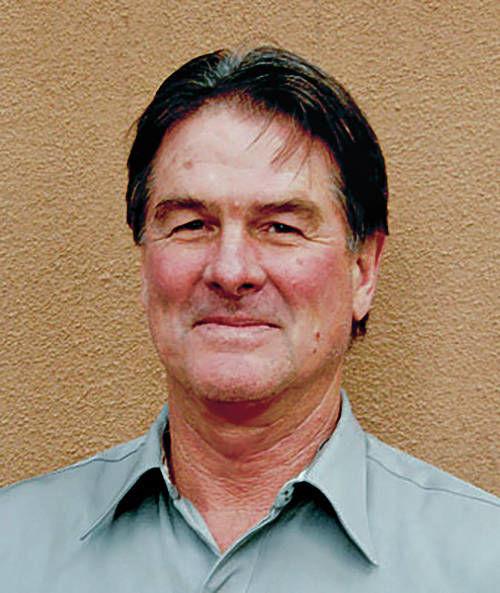
BY JAY COGHLAN | santafenewmexican.com
What these staged events fail to disclose, contradicting repeated claims of transparency, is that decisions already have been made behind closed doors to remove only approximately 6,500 cubic yards of radioactive and toxic waste, while leaving 30 times as much buried permanently above our groundwater aquifer.
LANL used to claim that groundwater contamination from lab operations was impossible. Today, we sadly know otherwise. Deep groundwater under LANL is contaminated with chromium, perchlorate and high explosives. Intermediate aquifers linked to deep groundwater are contaminated with tritium, industrial solvents, heavy metals and plutonium.
August 20 William Hartung, director of the Arms and Security Project at the Center for International Policy, sits down with Joe Cirincione to discuss the corporate connection to US arms sales abroad, and whether or not companies manufacturing weapons of war should bear responsibility for the casualties incurred as a result of their use.
Joe Cirincione hosts Early Warning with Ploughshares Fund Deputy Director of Policy Mary Kaszynski and Jessica Lee, Senior Director at Council of Korean Americans. Also, Michelle Dover and Joe Cirincione answer a question from Melissa about the differences in US policy toward Iran and North Korea.
U.S. Arms Sales to Saudi Arabia: The Corporate Connection, William Hartung’s new report: static.wixstatic.com/ugd/fb6c59_7fa…0227cc59fb.pdf
Listen, Subscribe and Share on iTunes · Spotify · SoundCloud · YouTube · Google Play · Sticher
Also available on ploughshares.org/pressthebutton
August 20 William Hartung, director of the Arms and Security Project at the Center for International Policy, sits down with Joe Cirincione to discuss the corporate connection to US arms sales abroad, and whether or not companies manufacturing weapons of war should bear responsibility for the casualties incurred as a result of their use.
Joe Cirincione hosts Early Warning with Ploughshares Fund Deputy Director of Policy Mary Kaszynski and Jessica Lee, Senior Director at Council of Korean Americans. Also, Michelle Dover and Joe Cirincione answer a question from Melissa about the differences in US policy toward Iran and North Korea.
U.S. Arms Sales to Saudi Arabia: The Corporate Connection, William Hartung’s new report: static.wixstatic.com/ugd/fb6c59_7fa…0227cc59fb.pdf
Listen, Subscribe and Share on iTunes · Spotify · SoundCloud · YouTube · Google Play · Sticher
Also available on ploughshares.org/pressthebutton
IPPNW warns of dire consequences of military escalation in Kashmir
 International Physicians for the Prevention of Nuclear War (IPPNW) is calling on the Indian government to restore immediately all communications and freedom of movement in Kashmir and Jammu, and urging all states in the disputed border regions to initiate new diplomatic talks aimed at reducing tensions and negotiating a peaceful settlement to the long-standing conflict.
International Physicians for the Prevention of Nuclear War (IPPNW) is calling on the Indian government to restore immediately all communications and freedom of movement in Kashmir and Jammu, and urging all states in the disputed border regions to initiate new diplomatic talks aimed at reducing tensions and negotiating a peaceful settlement to the long-standing conflict.
IPPNW is deeply concerned that deteriorating humanitarian and political conditions in Kashmir, after the Indian government put the area in lockdown earlier this month, are increasing significantly the risk of military escalation between nuclear-armed India and Pakistan. Three of the four wars fought between India and Pakistan have started in Kashmir.
The nuclear arms race is back … and ever more dangerous now
Donald Trump has increased spending on America’s arsenal while ripping up cold war treaties. Russia and China are following suit.
BY SIMON TISDALL | theguardian.com
A missile test launch by North Korea on 25 July this year. Photograph: APImagine the uproar if the entire populations of York, Portsmouth or Swindon were suddenly exposed to three times the permissible level of penetrating gamma radiation, or what the nuclear physicist Ernest Rutherford termed gamma rays. The outpouring of rage and fear would be heard across the world.
That’s what happened to the roughly 200,000 people who live in the similarly sized northern Russian city of Severodvinsk on 8 August, after an explosion at a nearby top-secret missile testing range. Russia’s weather service, Rosgidromet, recorded radiation levels up to 16 times higher than the usual ambient rate.
Yet the incident has been met with surly silence by Russia. It was five days before officials confirmed a blast at the Nyonoksa range had killed several people, including nuclear scientists. No apologies were offered to Severodvinsk residents. There is still little reliable information. “Accidents, unfortunately, happen,” a Kremlin spokesman said. That callous insouciance is not universally shared. According to western experts, the explosion was caused by the launch failure of a new nuclear-powered cruise missile, one of many advanced weapons being developed by Russia, the US and China in an accelerating global nuclear arms race.
RCLC Does Not Represent The Taos Constituency
La Jicarita
BY KAY MATTHEWS | losalamosreporter.com

The Regional Coalition of LANL Communities has ties to some of the same people and businesses as that of the Rocky Flats Coalition, and this connection may well influence on-going cleanup at Los Alamos National Laboratory and the transfer of contaminated lands from Department of Energy responsibility, some of which has already occurred.
David Abelson of Crescent Strategies, brought in to facilitate the LANL Coalition back in 2011, was the executive director of the Rocky Flats Coalition of Local Governments, and several Washington-based D.C. businesses that advised the Rocky Flats Coalition are working with the LANL Coalition. They all assisted in the effort to convert Rocky Flats to a wildlife refuge, an outcome which required much lower standards for clean-up than, for example, human residency. This created a credibility gap that the mission of the RCLC is to lobby for cleanup of LANL.
Nuclear weapons are spreading. This plutonium scientist is trying to stop that
Siegfried Hecker serves as a scientific shuttle diplomat, building ties with rival nuclear researchers the world over.
BY STEPHEN SHANKLAND | cnet.com
CC: STEPHEN SHANKLAND/CNETWhen you think of efforts to pare down the world’s nuclear weapons stockpiles, maybe you imagine heads of state and uniformed generals sternly staring down their military rivals across a huge table.
Reality, though, looks very different.
Picture instead a white-haired, US weapons scientist sidestepping the summit meetings and heading directly to research labs in Russia, China, Pakistan and even North Korea to chat about physics and build the direct ties that may be more effective at establishing trust than edicts from the top brass.
Native American tribe claims nuclear waste can’t be stored on its land
To the Western Shoshone, most of Nevada isn’t Nevada. At least not in the current sense.
BY JOHN SADLER | lasvegassun.com
More than 150 years after the first treaty between the Western Shoshone and the federal government was signed, the two nations disagree on the outcome—the Shoshone say they never turned over their land.
The majority of the land in Nevada falls under the Shoshone’s historical claim. It includes the Nevada National Security Site (formerly Nevada Test Site), which has released hundreds of tons of fallout in its operational history. It also includes Yucca Mountain, which has been the center of a decades-long argument centered on the long-term storage of the nation’s nuclear waste.
The plan to turn the mountain into a nuclear waste facility drums up memories of past nuclear use of the land, and some members of the tribe are pushing back.
August 13 Robert Malley, President and CEO of the International Crisis Group, sits down with Joe Cirincione to discuss the current situation in Iran, which he sees as a 21st century ‘Guns of August.’
Robert served in the Obama administration as Special Assistant to the President, Senior Adviser to the President for the Counter-ISIL Campaign, and White House Coordinator for the Middle East, North Africa and the Gulf region. Michelle Dover hosts Early Warning with Ploughshares Fund Deputy Director of Policy Mary Kaszynski and Jessica Sleight, Program Director at Global Zero.
Listen, Subscribe and Share on iTunes · Spotify · SoundCloud · YouTube · Google Play · Sticher
Also available on ploughshares.org/pressthebutton
Church Rock, America’s Forgotten Nuclear Disaster, Is Still Poisoning Navajo Lands 40 Years Later
Residents say they’ve been ignored even as they struggle with contaminated water and worry about having children.
BY SAMUEL GILBERT & RAMSAY DE GIVE | cnn.com
A BARBED-WIRE FENCE IN CHURCH ROCK, NEW MEXICO.
Early in the summer of 1979, Larry King, an underground surveyor at the United Nuclear Corporation’s Church Rock Uranium mine in New Mexico, began noticing something unusual when looking at the south side of the tailings dam. That massive earthen wall was responsible for holding back thousands of tons of toxic water and waste produced by the mine and the nearby mill that extracted uranium from raw ore. And as King saw, there were “fist-sized cracks” developing in that wall. He measured them, reported them to his supervisors, and didn’t think anything more of it.
A few weeks later, at 5:30 a.m. on July 16, 1979, the dam failed, releasing 1,100 tons of uranium waste and 94 million gallons of radioactive water into the Rio Puerco and through Navajo lands, a toxic flood that had devastating consequences on the surrounding area.
“The water, filled with acids from the milling process, twisted a metal culvert in the Puerco,” according to Judy Pasternak’s book Yellow Dirt: A Poisoned Land and the Betrayal of the Navajos. “
Sheep keeled over and died, and crops curdled along the banks. The surge of radiation was detected as far away as Sanders, Arizona, fifty miles downstream.” According to a Nuclear Regulatory Commission report, radioactivity levels in the Puerco near the breached dam were 7,000 times that of what is allowed in drinking water.
See NukeWatch’s 22-page formal comments on expanded plutonium pit production
“Until NNSA fully complies with the National Environmental Policy Act through the preparation of a programmatic environmental impact statement on expanded plutonium pit production, Nuclear Watch believes that any irreversible or irretrievable commitment of resources to either the expansion of pit production at the Los Alamos Lab or to the repurposing of the MOX Facility at the Savannah River Site is unlawful.“
NRDC Comments on NNSA’s Draft SA of 2008 CT PEIS
These comments by the Natural Resources Defense Council (NRDC) reiterate two fundamental points I have already made with co-counsel William N. Lawton of Meyer Glitzenstein & Eubanks, LLP in our May 17, 2019 letter to Department of Energy (DOE) Secretary James Richard Perry and National Nuclear Security Administration (NNSA) Administrator Lisa Gorden-Hagerty
1) Given NNSA’s May 10, 2018 decision to expand plutonium pit production, the National Environmental Policy Act (NEPA) clearly requires the agency to prepare a new programmatic environmental impact statement (PEIS) to supplement the 2008 Complex Transformation PEIS; and
2) Even if NNSA does not agree with the above, there is a 1998 court order that requires DOE to prepare a supplemental PEIS in the event NNSA’s proposed plans for future plutonium pit production extend beyond fabrication at LANL of 50 pits per year under “routine conditions,” or 80 pits per year under “multiple shift operations.”
The Ongoing Call for Nuclear Abolition at Los Alamos
The sick people who prevent gun control and support AK47s are the same people who support the building and maintenance of nuclear weapons, which put millions of people at risk from some unimaginable massacre to come.
AUGUST 9, 2019 | BY REV. JOHN DEAR | commondreams.org
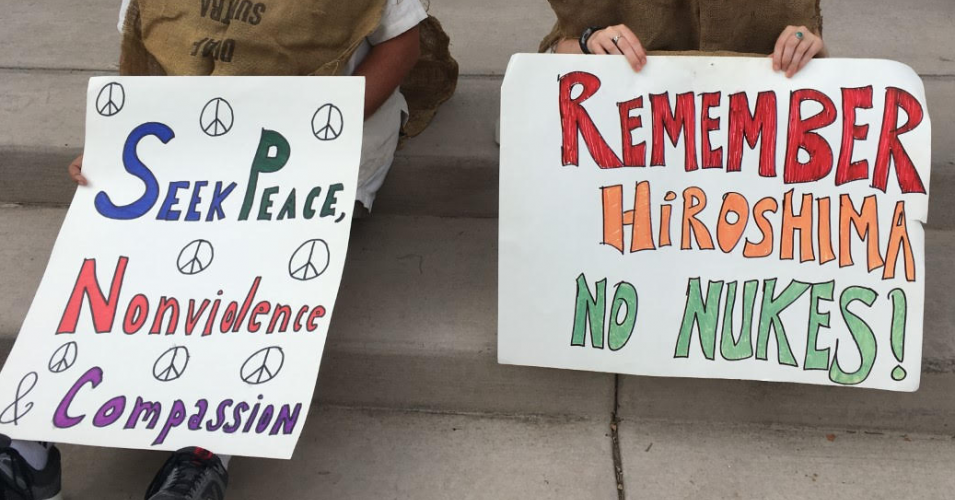
REFLECTING ON THE 74th ANNIVERSARY OF HIROSHIMA
This week, we drove back up the remote New Mexico mountains to the “atomic city” for our annual peace vigil, sit in and rally. This was our 16th year in a row.
Jay Coghlan of NukeWatch New Mexico talked about the seriousness and stupidity of the Trump Administration’s decision last week to pull out of the Arms Control Treaty, a decision that has gotten lost in all the other bad news (see: www.nukewatch.org). Joni Arends of Concerned Citizens for Nuclear Safety New Mexico spoke of the latest shenanigans by the Labs, to bypass the legal oversight of its water purification system so that plutonium contaminated water can continue to poison the land (see: www.nuclearactive.org). Alicia from NukeWatch explained the latest progress with the U.N. treaty to outlaw nuclear weapons, organized by the 2017 Nobel Peace Prize winning group, the International Campaign to Abolish Nuclear Weapons (see: www.icanw.org).
VIEW MORE PHOTOS FROM THE EVENT
Nuclear News Archives – 2018
George Shultz: We Must Preserve This Nuclear Treaty
BY GEORGE P. SHULTZ nytimes.com
Mr. Shultz was a secretary of state in the Reagan administration.
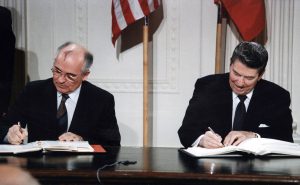
Nuclear weapons are a threat to the world. Any large-scale nuclear exchange would have globally catastrophic consequences. Conscious of this reality, President Ronald Reagan and Mikhail Gorbachev, the leader of the Soviet Union, worked in the 1980s to reduce the number of nuclear weapons, with the ultimate goal of getting rid of them.
The Intermediate-Range Nuclear Forces Treaty, signed in 1987, was a major step toward this goal, eliminating a large class of nuclear weapons that were viewed as particularly destabilizing. The treaty is still in force, although both the Obama and Trump administrations have said that Russia is in violation. Whatever the case, we need to preserve the agreement rather than abandon it, as President Trump has threatened to do.
Watchdog groups seek review of plutonium plan
Andy Stiny | The Santa Fe New Mexican
Three nuclear watchdog groups across the U.S., including Santa Fe-based Nuclear Watch New Mexico, are accusing the National Nuclear Security Administration of creating a plan to increase production of plutonium bomb cores in violation of an environmental law.
Nuclear Ban Treaty Could Come Into Force in 2019, Campaigners Say
OCTOBER 28, 2018 / 5:12 PM
Tom Miles
REUTERS WORLD NEWS
GENEVA (Reuters) – A treaty banning nuclear weapons could come into force by the end of 2019, backers of a campaign that won the 2017 Nobel Peace Prize said in an annual progress report on Monday.
The treaty aims to stigmatize nuclear weapons as previous treaties marginalized landmines and cluster munitions. Signatories promise to reject nuclear strategies and encourage others to follow suit.
The Nuclear Weapons Ban Monitor, published by Norwegian People’s Aid, said 19 states had already adhered to the 2017 Treaty on the Prohibition of Nuclear Weapons, putting it well on the way to the 50 ratifications it needs to come into force.
George Shultz: We Must Preserve This Nuclear Treaty
BY GEORGE P. SHULTZ nytimes.com
Mr. Shultz was a secretary of state in the Reagan administration.
Mikhail Gorbachev and Ronald Reagan signing the Intermediate-Range Nuclear Forces Treaty at the White House in 1987. Universal History Archive/UIG, via Getty ImagesNuclear weapons are a threat to the world. Any large-scale nuclear exchange would have globally catastrophic consequences. Conscious of this reality, President Ronald Reagan and Mikhail Gorbachev, the leader of the Soviet Union, worked in the 1980s to reduce the number of nuclear weapons, with the ultimate goal of getting rid of them.
The Intermediate-Range Nuclear Forces Treaty, signed in 1987, was a major step toward this goal, eliminating a large class of nuclear weapons that were viewed as particularly destabilizing. The treaty is still in force, although both the Obama and Trump administrations have said that Russia is in violation. Whatever the case, we need to preserve the agreement rather than abandon it, as President Trump has threatened to do.
WIPP: Waste Calculation Change Discussed
BY ADRIAN C. HEDDEN, Carlsbad currentargus.com
WIPP:
“Calculation change will not impact facility’s capacity”
[We at NukeWatch do believe that this proposed change WILL expand WIPP’s capacity and are working hard to stop it.]
Officials at the Waste Isolation Pilot Plant said a proposed modification to facility’s permit to dispose of nuclear waste will have little impact on WIPP operations or its maximum capacity for emplacement. The modification regards how the facility tracks the volume of transuranic (TRU) waste permanently stored in the underground repository.
Atomic Bomb Survivors Urge Trump Not To ‘Turn Clock Back’
BY AI TANABE, Staff Writer The Asahi Shimbun
Hibakusha atomic bomb survivors admonished U.S. President Donald Trump for threatening to walk away from the Intermediate-range Nuclear Forces (INF) treaty in a protest letter sent to the U.S. Embassy in Tokyo on Oct. 22. The note, addressed in Japanese to the commander-in-chief, was compiled by five hibakusha groups in Nagasaki expressing their concerns over the proposed withdrawal from the 1987 treaty signed by the United States and the Soviet Union.
The groups stated that if the United States pulls out of the treaty, “global momentum for nuclear disarmament will fade away while the likelihood of a nuclear war crisis will rise.”
Feds Test Aquifer for Contamination of RDX
THE LOS ALAMOS MONITOR ONLINE
Feds Test Regional Aquifer for More LANL Contamination of High Explosives
Monday, October 22, 2018
Chemicals used to make high explosives have reached the regional water supply, the Los Alamos federal environmental manager discovered two years ago.
The contractor for the Department of Energy’s Environmental Management field office is drilling a second well to find out just how much contamination has occurred.
Critics: WIPP proposal would allow more nuclear waste storage
Critics: WIPP proposal would allow more nuclear waste storage
By Rebecca Moss | sfnewmexican.com
Sep 19, 2018 Updated Sep 19, 2018
As the public comment period closes Thursday on modifications to a state permit allowing the federal government to store nuclear waste at a southeastern New Mexico repository, critics are decrying the changes as an effort to increase storage capacity at the site and are accusing the state Environment Department of rushing the approval process.
The U.S. Department of Energy and Nuclear Waste Partnership LLC, a private contractor that manages the Waste Isolation Pilot Plant in Carlsbad, submitted a request early this year to change the way radioactive waste at the site is measured.
They want to measure the waste by the volume inside each waste drum rather than by the total number of containers at the site. WIPP can store a maximum of 6.2 million cubic feet of transuranic waste — discarded tools, soil and equipment contaminated by plutonium and other radioactive materials — in its underground salt-bed caverns. But its capacity has been measured so far by the total volume of the waste drums, not the materials held inside them.
Mini-nukes: Still a horrible and dangerous idea
Mini-nukes: Still a horrible and dangerous idea
By John Mecklin, September 19, 2018
Bulletin of the Atomic Scientists
Perhaps the most dangerous weapons program the US government has recently pursued involves a low-yield nuclear warhead for submarine-launched nuclear missiles. The arguments against development of such “small nukes” are legion and overwhelmingly compelling. In fact, almost exactly one year ago, I laid out some of those arguments in an article headlined, “Mini-nukes: The attempted resurrection of a terrible idea.” And, I said then, don’t just take my word for it; read the analysis of Jim Doyle, a former longtime technical staffer at the Los Alamos National Laboratory. Simply put, the availability of “small” nuclear warheads increases the likelihood that nuclear weapons will be used, and any use of nuclear weapons easily could (some experts might say “inevitably would”) lead to general nuclear war and the end of civilization.
In the last year, however, the Trump administration released a Nuclear Posture Review calling for development of a low-yield warhead for submarine-launched ballistic missiles. Congress subsequently passed a defense authorization act that includes money for the program, and another bill allocates millions in the Energy Department budget specifically for pursuit of the new warhead.
A September 11th Catastrophe You’ve Probably Never Heard About
In 1957, America narrowly averted a nuclear meltdown at the Rocky Flats plant in Colorado. A new book explores how close we all came to disaster.
ANDREW COHEN | theatlantic.com
